Do you ever get the feeling that your cuddly companion has invited some uninvited guests to the party? You know, the kind of party where the guests are tiny, blood-sucking freeloaders with a penchant for furry hosts? Well, if your pet has been doing the "flea shuffle" lately, it's time to roll out the pest control welcome mat and show these unwanted critters to the door! In this article, we're going to explore the secret world of pet-loving fleas.
Signs Your Pet Has Fleas
Owning a pet is like adding an extra layer of joy to your life. The playful frolics, the unconditional love, and those heart-melting puppy eyes – it's no wonder that a dog, or any furry friend for that matter, can quickly become an irreplaceable member of the family.

Image Source: Reddit
However, with great companionship comes great responsibility, and one crucial aspect of being a pet parent is keeping them happy, healthy, and well-groomed. Fleas are the ultimate party crashers in the pet world, capable of turning your furry fiesta into a miserable itch-fest.
Scratching, Biting Or Licking
It is no secret that our pets tend to scratch, bite and lick ALL the time. Not just themselves either; play-biting and licking our faces are all part of the fun of owning a pet (especially dogs). However, you need to keep an eye on your pet if they do this excessively.
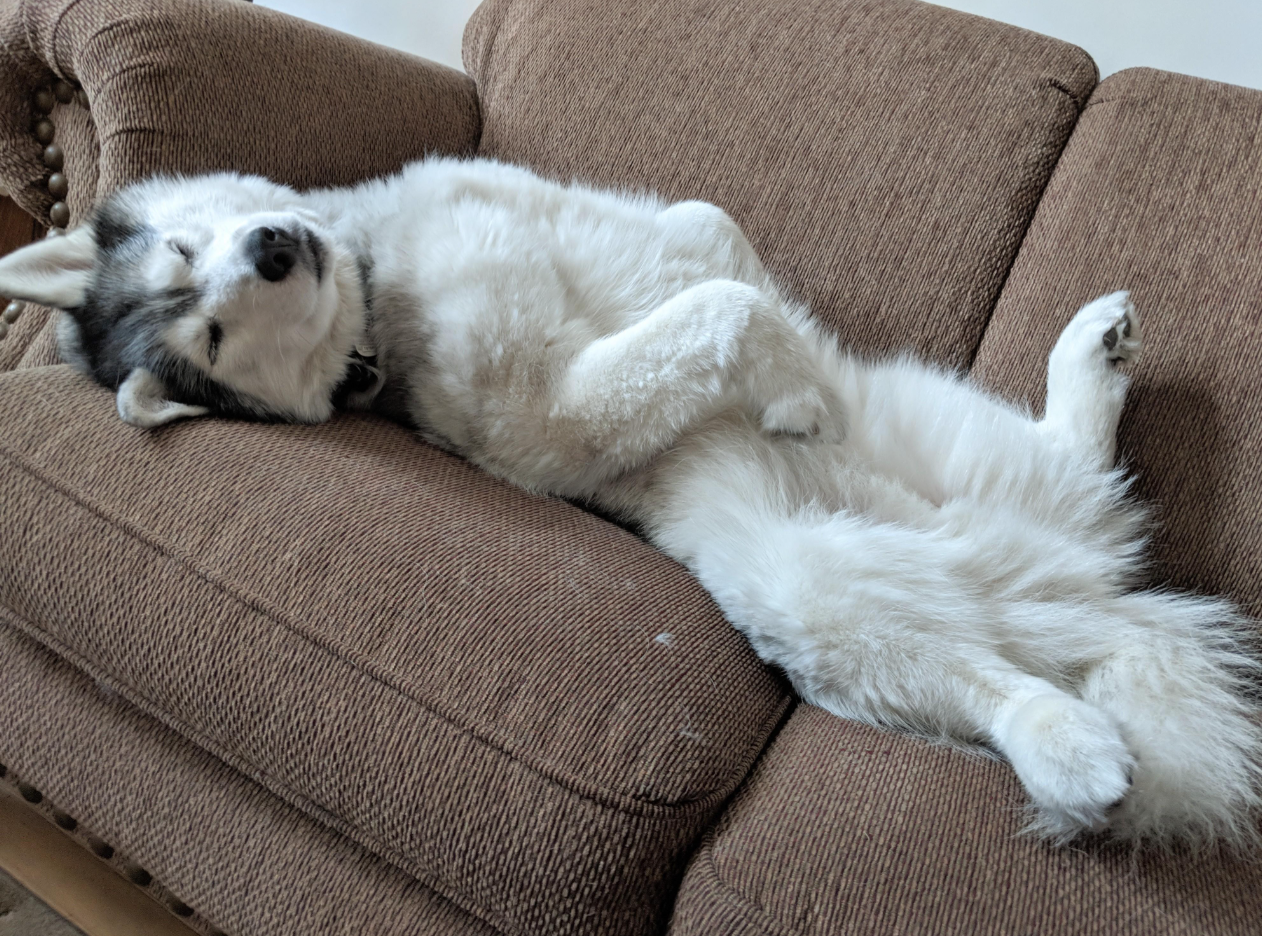
Image Source: Reddit
This heightened level of activity can be concerning, especially if it's a noticeable departure from your pet's typical behavior. It could be an early sign that your furry friend is dealing with discomfort, irritation, or a health issue that needs your attention.
Red Or Irritated Skin
Pets with fleas will display a number of symptoms that should alert you to their condition, and one of the biggest indicators is red or irritated skin. Fleas will bite your pet, which leads to reddening of their skin - this is often amplified by your pet's incessant itching.
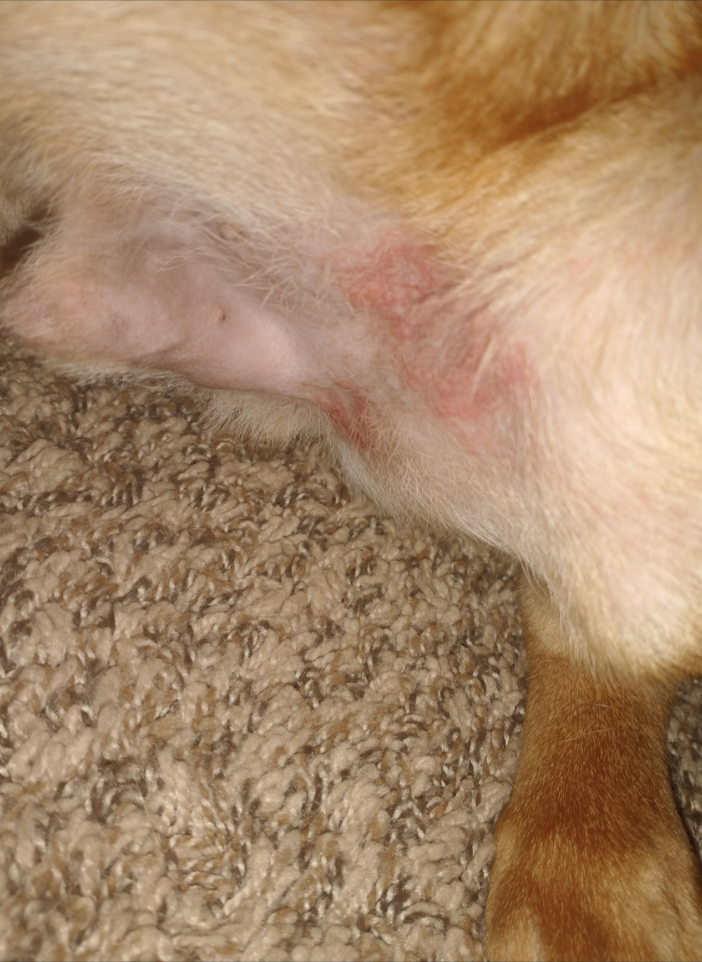
Image Source: Reddit
Fleas, being the opportunistic little biters they are, feast on your pet's blood, leaving behind a trail of itchy, inflamed skin in their wake. As these microscopic vampires puncture the skin to feed, their bites often trigger an inflammatory response in your pet's body.
Presence Of Small Black Dots
Okay, this one is pretty gross, but as a pet owner it is imperative to know this. Nature calls, even for tiny, invasive insects that latch on to your pet's fur. If your pet has fleas, you might start to notice really small black dots littered over their fur.
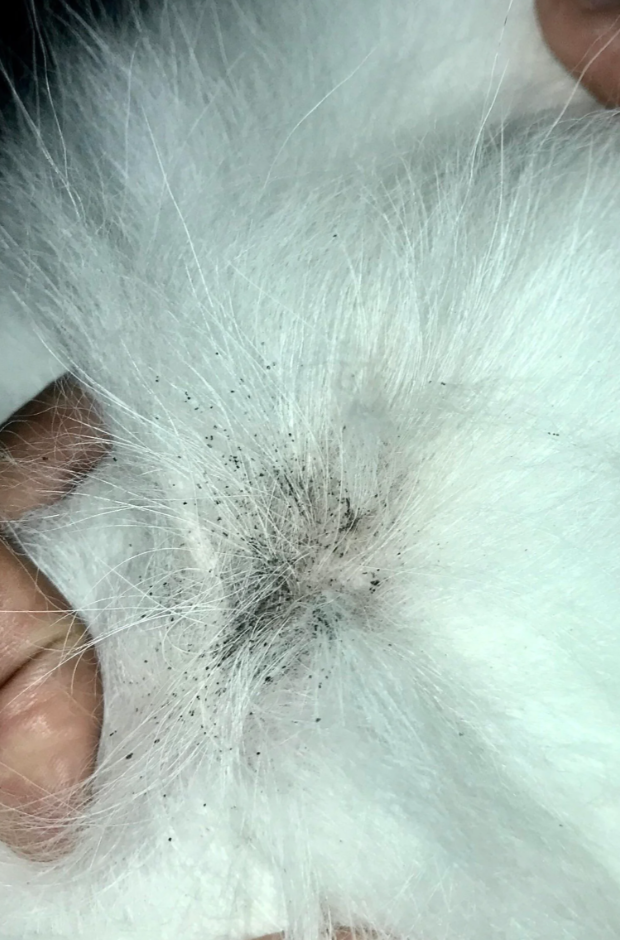
Image Source: Reddit
This is a sign of flea faeces. Yep, told you it was gross. So, if you happen to come across these small, black dots on your pet's fur, don't be too quick to dismiss them as mere dirt or debris. Instead, take it as a clear sign that it's time to give your pet a thorough once-over.
Visible Fleas On Your Pets Fur
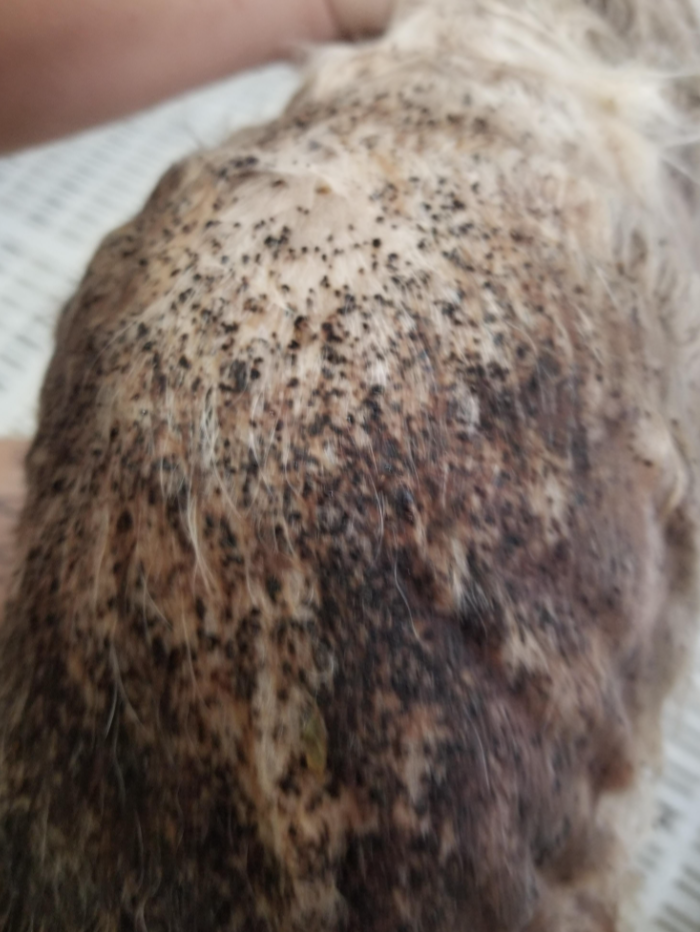
Image Source: Reddit
Okay, this is probably the most obvious sign that your pet has fleas, right? But not everyone has seen a flea before, and not everyone thinks to check their pets for them. Fleas are small, bug-like creatures and, if your pet has them, a quick scan of their fur will reveal them pretty quickly. If you spot these pesky critters, it's time to break up the bug party and bounce the fleas right out of your pet's fur.
Tiny White Eggs Attached To Your Pets Fur
Okay, this is probably the most obvious sign that your pet has fleas, right? But not everyone thinks to check their pets for them. Fleas are small, bug-like creatures and, if your pet has them, a quick scan of their fur will reveal them pretty quickly.
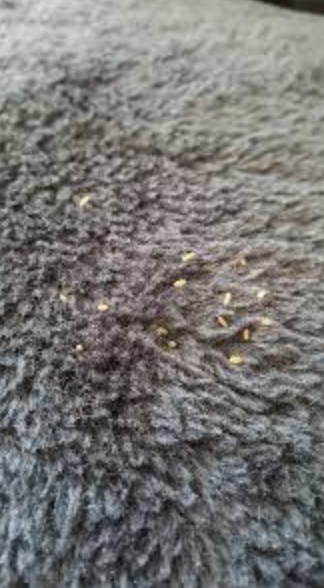
Image Source: Reddit
Fleas, being the prolific reproducers that they are, lay their eggs on your pet, and these eggs are designed to be tenacious. They're often discreetly tucked away in the warm, cozy folds of your pet's fur, and their appearance is a telltale sign that the fleas are rapidly multiplying.
Fur Loss
We all know how much fur comes off of them. Even short-haired hounds will malt until their little hearts are content, leaving balls of fur all over the house floor. Malting is totally normal for your precious pooch, but excessive fur loss is definitely out of the ordinary.

Image Source: Reddit
So, if you're noticing a dramatic increase in your pet's shedding, don't chalk it up solely to their breed or the changing seasons. It could be a sign that those unwelcome guests are making your pet's life miserable and interfering with their natural coat maintenance.
Restlessness Or Difficulty Sleeping
Pets sleep a lot. Like, sometime all day if they've been sufficiently exercised. There's nothing more peaceful than a sleeping dog dreaming of chasing rabbits and eating bones. So, you'll know that if your pet isn't sleeping all too well, then something has got to be up.
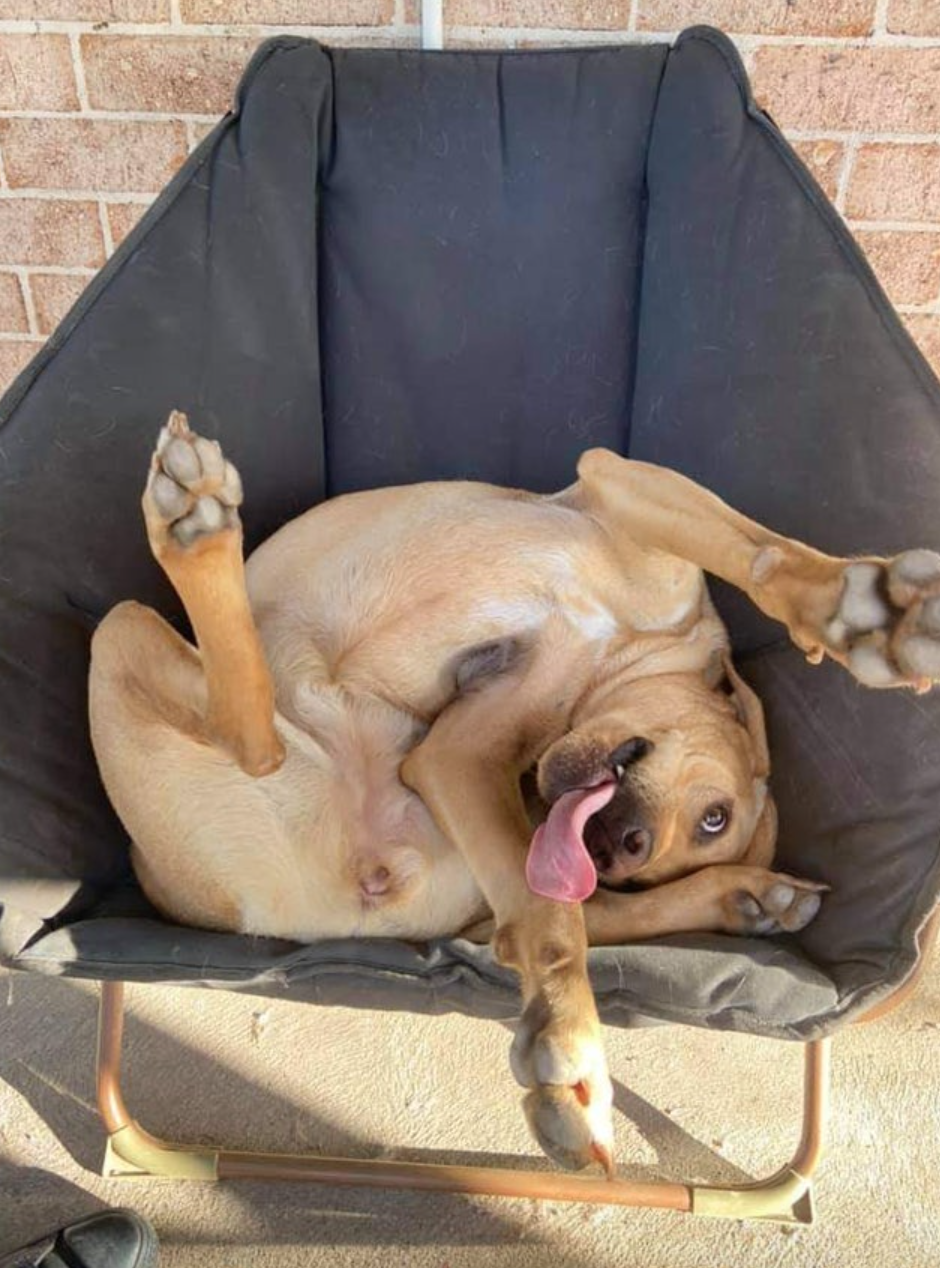
Image Source: inspiremore.com
So, if you've noticed your adorable puppy tossing and turning at night or having difficulty finding that sweet spot of slumber, it's essential to consider the possibility of a flea infestation. Addressing this issue promptly ensures your pet's comfort.
Pale Gums
Every pet owner should regularly check the dental health of their pet to make sure there is nothing wrong or anything needing immediate medical attention. There are lots of things you should be checking for, but if you spot that your pets gums have gone pale...
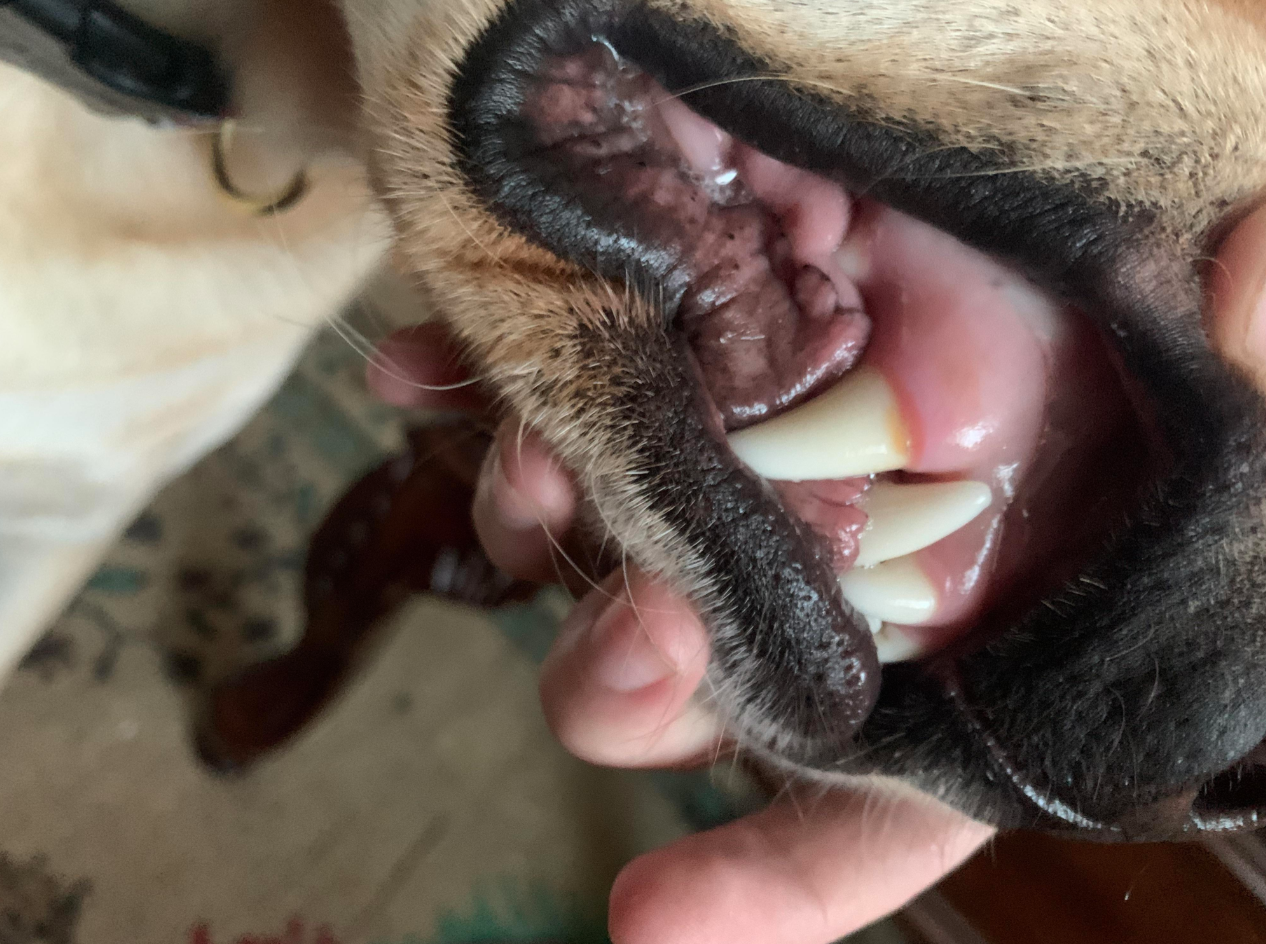
Image Source: Reddit
...it may be time go get out the flea repellent. If your pet has pale gums, it is a sure sign that it is suffering from anemia and needs medical attention ASAP. As a responsible pet owner, if you spot pale gums in your beloved companion, it's crucial not to delay.
Scabs On Skin
Another easy way to tell if your pet has fleas is if their skin is full of scabs. Flea bites lead to irritation, and can often scab over, especially if your pet has been aggressively scratching them to relieve the flea-inflicted itch. Frustratingly, scabs eventually itch...
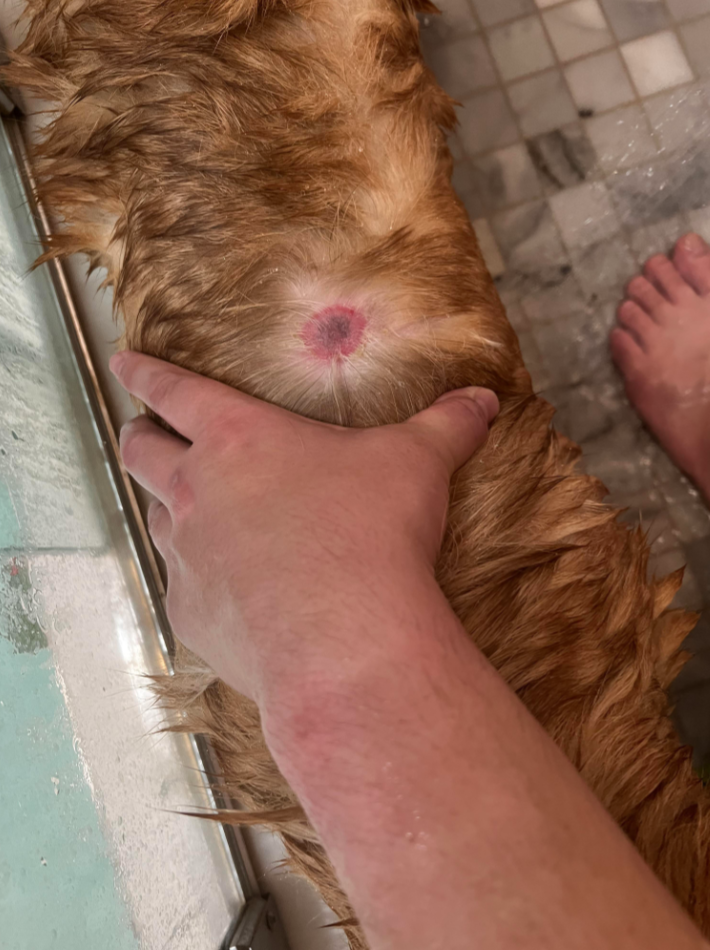
Image Source: Reddit
... which makes your pet scratch it and reopen the scabbed area, which in turn scabs over and then itches again. Recognizing the presence of fleas when you see scabs on your pet's skin is the first step towards breaking this cycle and providing them with the relief they deserve
Small Red Bumps On Skin
Fleas love to leave their horrible mark, and those itchy red bumps all over your pets skin is a tell-tale sign that fleas have taken up residence in your pets fur. The best thing to do is groom your dog as much as you can, and regularly check them for fleas.
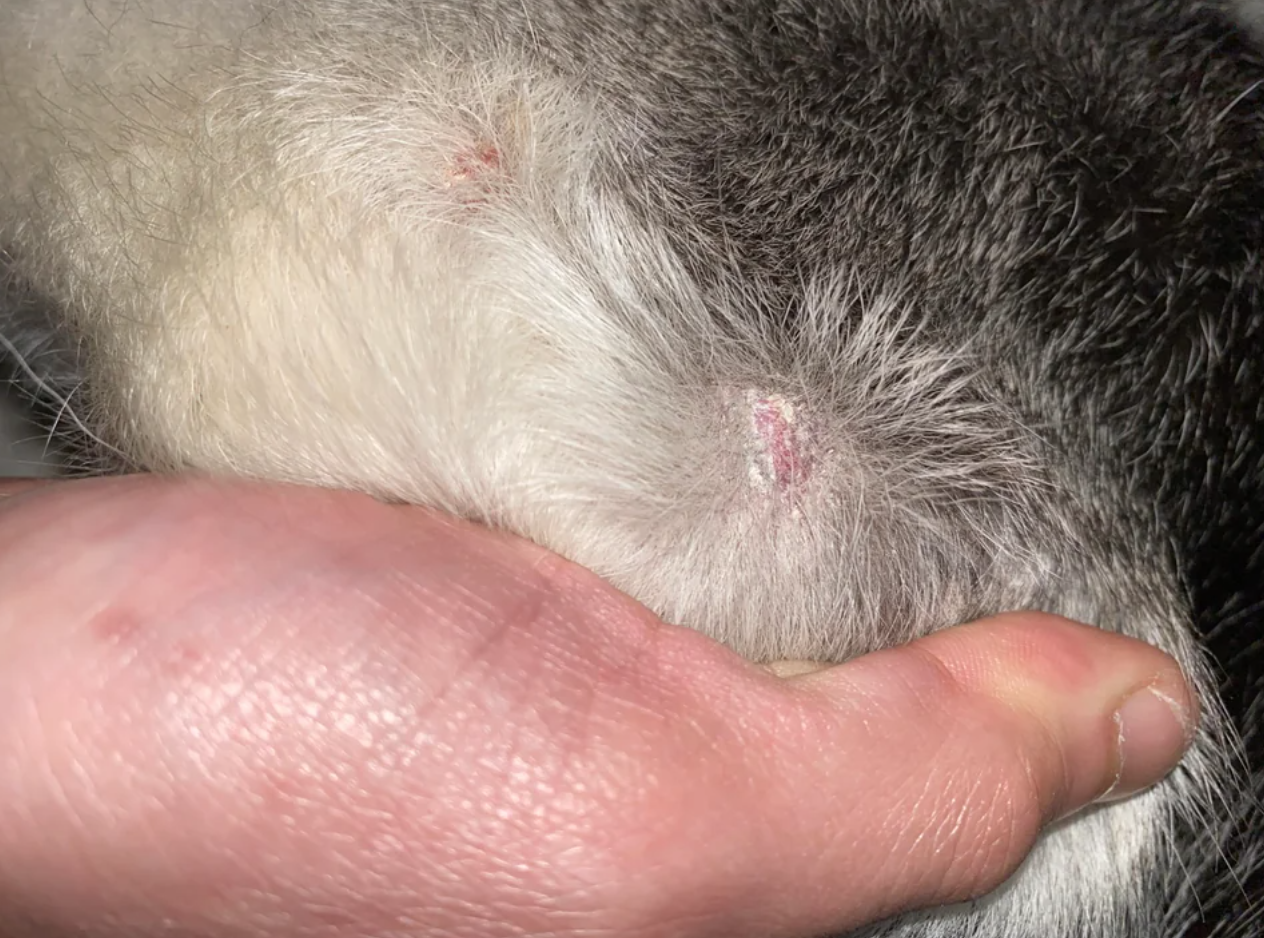
Image Source: Reddit
So, while fleas might try to leave their horrible mark, your dedication to grooming and vigilant checks means you can stay one step ahead. By catching these unwelcome guests before they have a chance to take over, you're not only protecting your pet but also preserving their peace.
Flea Dirt In Your Pet's Bed
An uptick in behaviours such as scratching and biting could signal a potential flea infestation in your pet. So, if you notice that your beloved pet showing excessive discomfort, it's time to inspect their bed for tiny dark specks, commonly known as flea dirt.
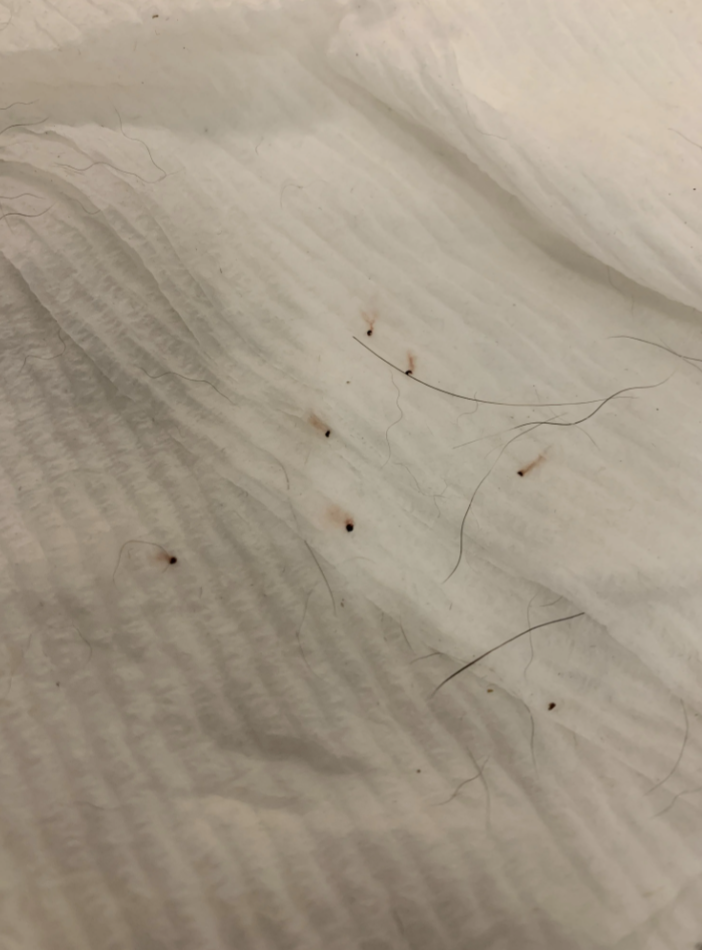
Image Source: Reddit
Taking swift action is crucial to spare your dear pet from these irksome parasites and to ensure their continued joyous companionship. Treating a flea infestation promptly is not only about providing relief to your pet but also about safeguarding your home from these persistent invaders.
Excessive Grooming Behaviour
Our beloved pets find solace in grooming, a ritual that keeps them looking dapper and feeling fresh. However, when our furry friends engage in relentless grooming, you must pay closer attention. Unusual and repetitive licking, biting or fur-chewing may indicate an underlying issue.
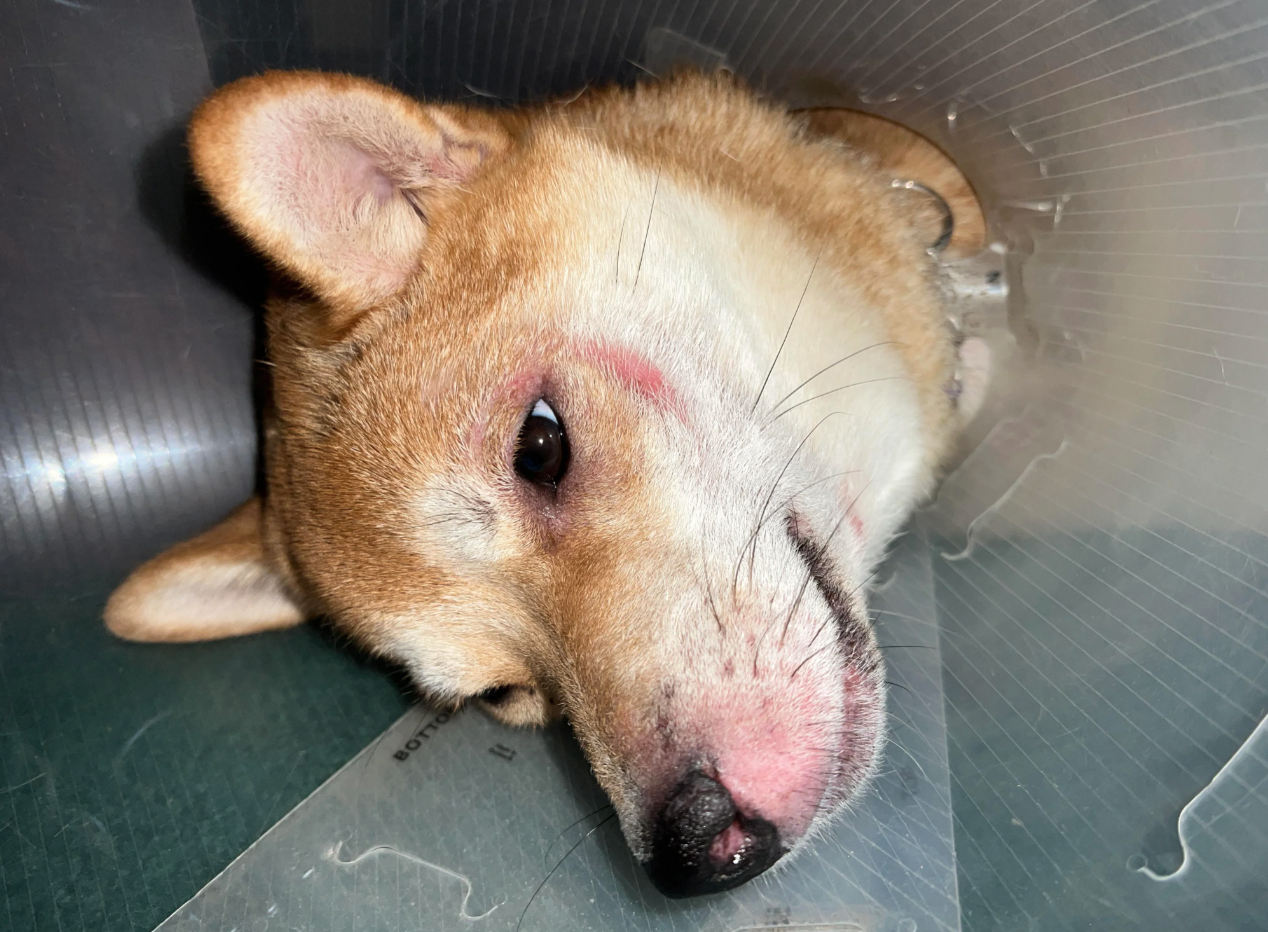
Image Source: Reddit
Therefore, if you observe your beloved pet engaging in such unusual and obsessive grooming behaviors, it's more than just a quirky phase; it's a cry for help. Addressing the issue requires a careful investigation to identify the root cause, whether it's stress or the presence of fleas.
Your Pet's Fur Suddenly Smells Bad
For those of us seasoned dog Mom's and Dad's, we know that our furry companions aren't always the epitome of freshness. Yet, there is a noticeable difference between the occasional wet dog smell and a sudden, overpowering stench wafting up from their fur.
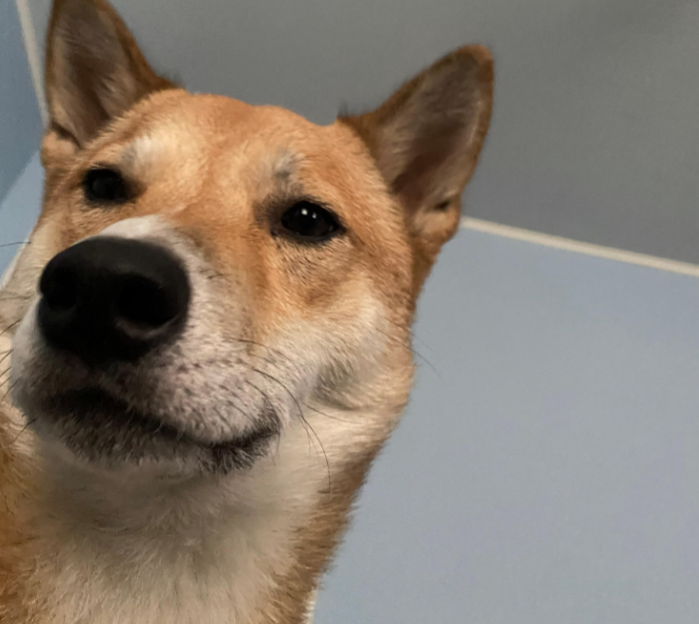
Image Source: Reddit
If your once-fresh pet suddenly begins to emit an overwhelming, foul smell, it's time to pay close attention. This sudden shift in their aroma is a clear signal that it's time to investigate and confirm the presence of fleas. Identifying the issue promptly is essential for your pet's comfort.
Irritated Eyes
We're well attuned to our furry friends' cues, especially when it comes to their health and well-being. In particular, our pet's eyes offer a window into their current state of health. When those adoring eyes appear red and watery, it's a signal that something isn't right.
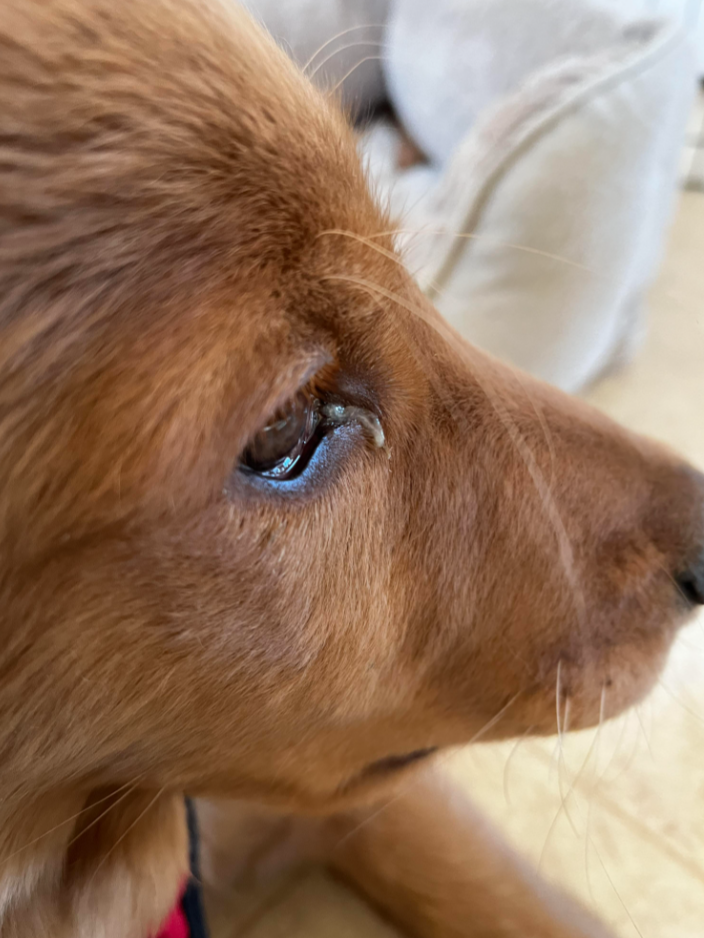
Image Source: Reddit
Therefore, when you notice the telltale signs of red and watery eyes in your beloved pet, don't simply dismiss it as a minor issue. It's a call to action, a signal that your pet is experiencing discomfort, and it's well worth checking for fleas as a potential source of the problem.
Increased Aggression
One concerning change is when our dear pets display increased aggression. While occasional barks or growls are natural, a significant increase in aggressive behavior warrants our full attention. As responsible pet parents, we must delve into the underlying causes.
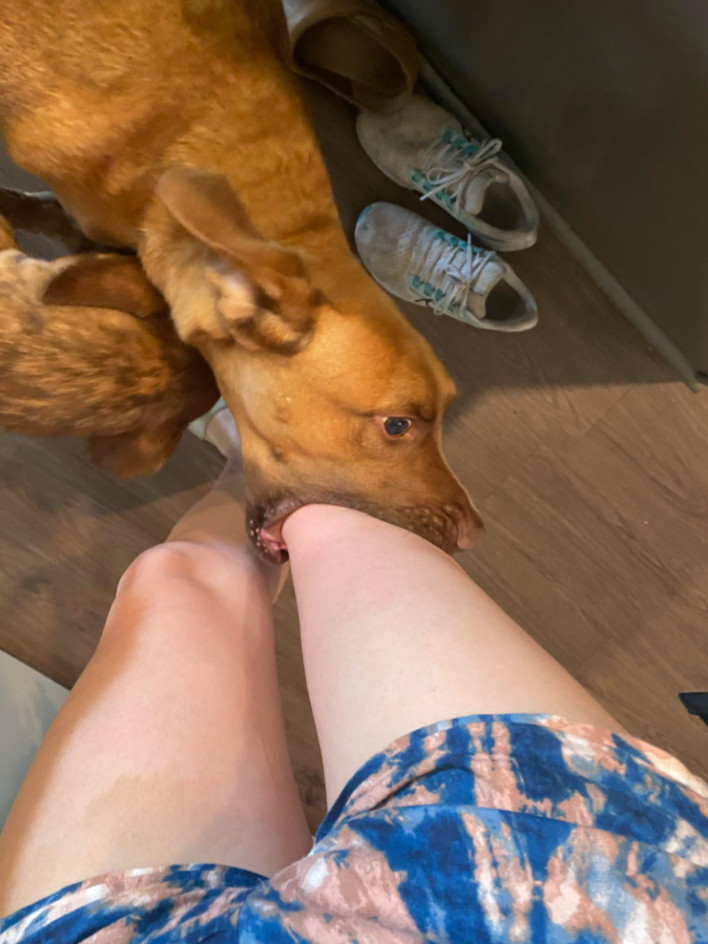
Image Source: Reddit
Fleas, with their relentless biting and bloodsucking, can trigger a cascade of physical and emotional distress in our pets. The itching, discomfort, and pain caused by flea bites can lead to a heightened state of agitation and aggression. Our pets may express it through their actions.
Visible Redness In Your Pet's Ears
When it comes to our pet's health, we notice even slight changes in our dogs behavior. Redness in their ears can indicate fleas. Timely attention and a visit to the vets can help diagnose and treat the underlying issue, ensuring our furry friends remain free from the distress of fleas.
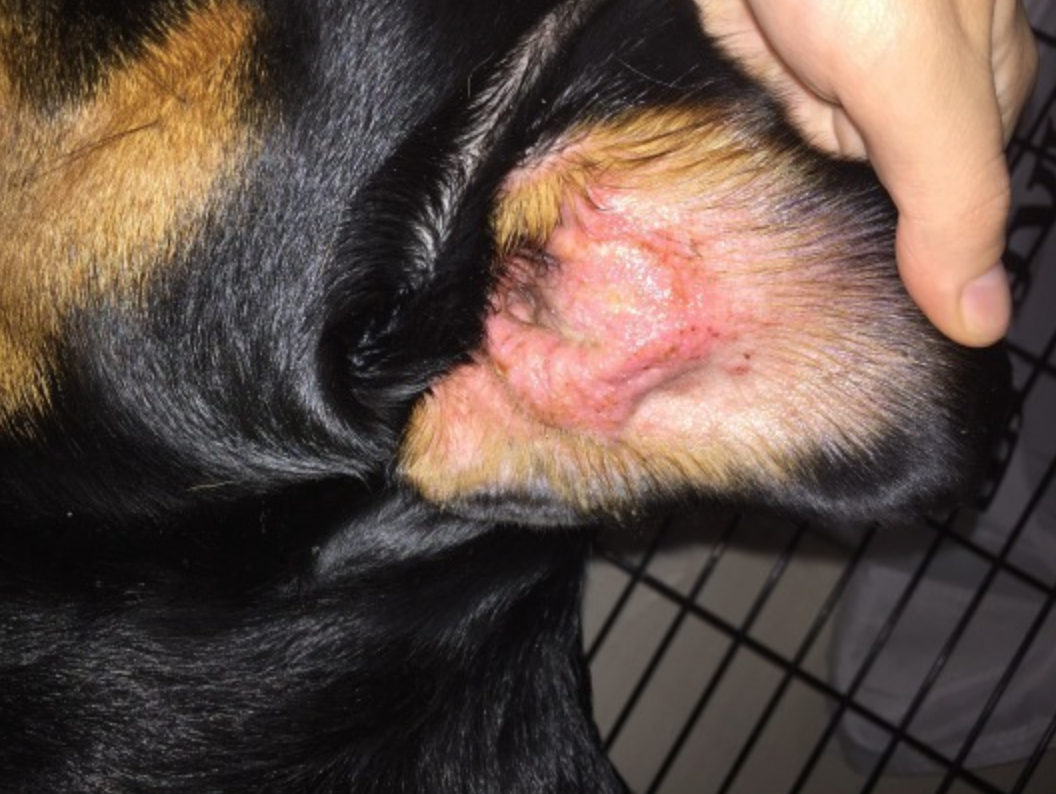
Image Source: Tumblr
Prompt attention to redness in your pet's ears is essential. It's a sign that something is affecting their health and happiness, and the sooner you take action, the quicker you can diagnose and treat the underlying issue. A visit to the veterinarian is often the best course of action.
Difficulty Settling Down
When our pets exhibit difficulty settling down, it definitely gives us pause. We understand the importance of a calm and contented pet and, if you notice your previously chilled-out pet pacing restlessly and unable to find comfort, it could be a sign of a flea infestation.
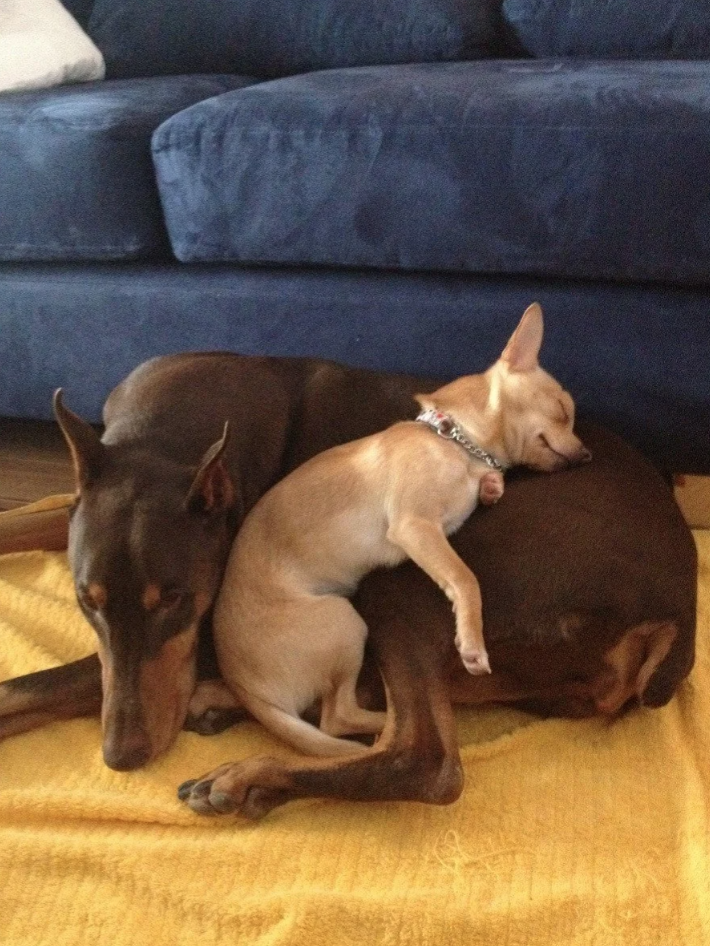
Image Source: Reddit
Another aspect to consider is the emotional well-being of your pet. Anxiety, whether triggered by a flea infestation or other stressors, can manifest as restlessness and a persistent inability to find tranquility. These symptoms are equally significant.
No Appetite
There is something almost therapeutic about watching our furry friends devour their food without a care in the world. However, if you notice your pet turning its nose up at its favorite meal, then something could be seriously wrong. Illness, dental problems or emotional distress.
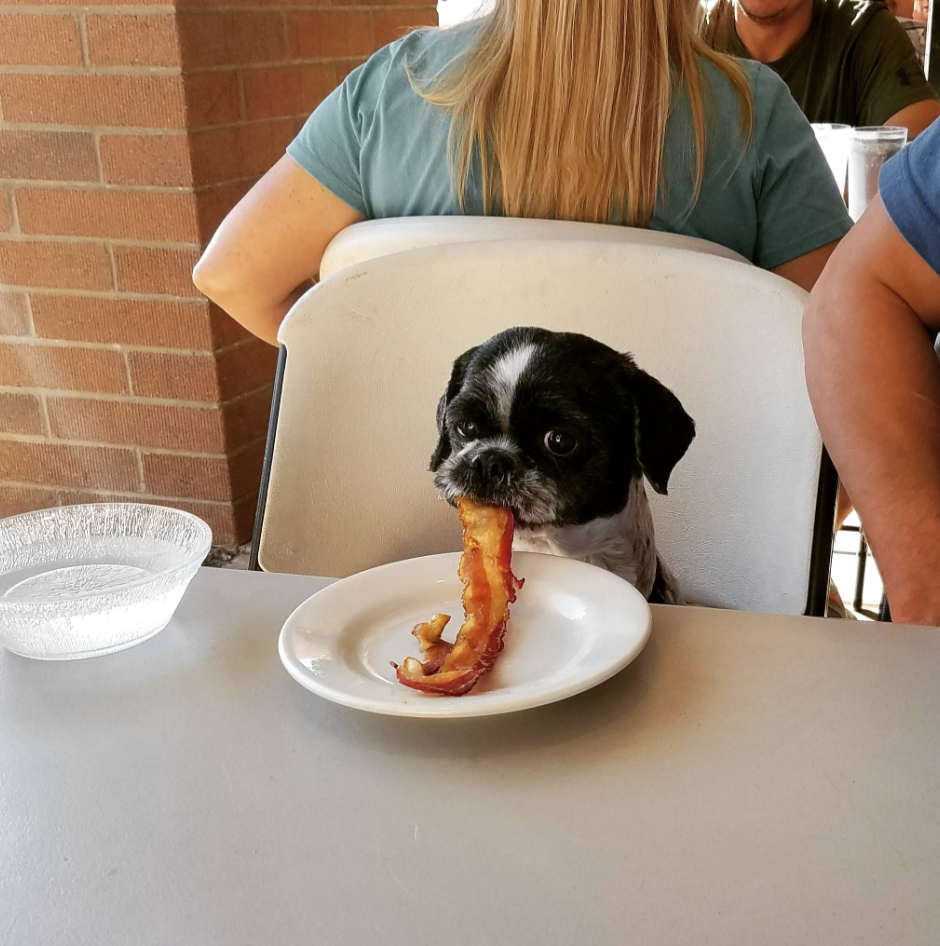
Image Source: Reddit
Fleas, with their relentless biting and bloodsucking, can induce physical discomfort and emotional distress in your pet. The irritation caused by flea bites, the incessant itching, and the general unease can lead to a profound change in their behavior.
Weight Loss
If you've noticed your cuddly pal shedding some extra pounds unexpectedly, don't just brush it off as a new fitness routine! Weight loss in our pets can sometimes be a sneaky sign of a potential flea infestation. Those pesky critters can make your fur baby feel itchy and uncomfortable.
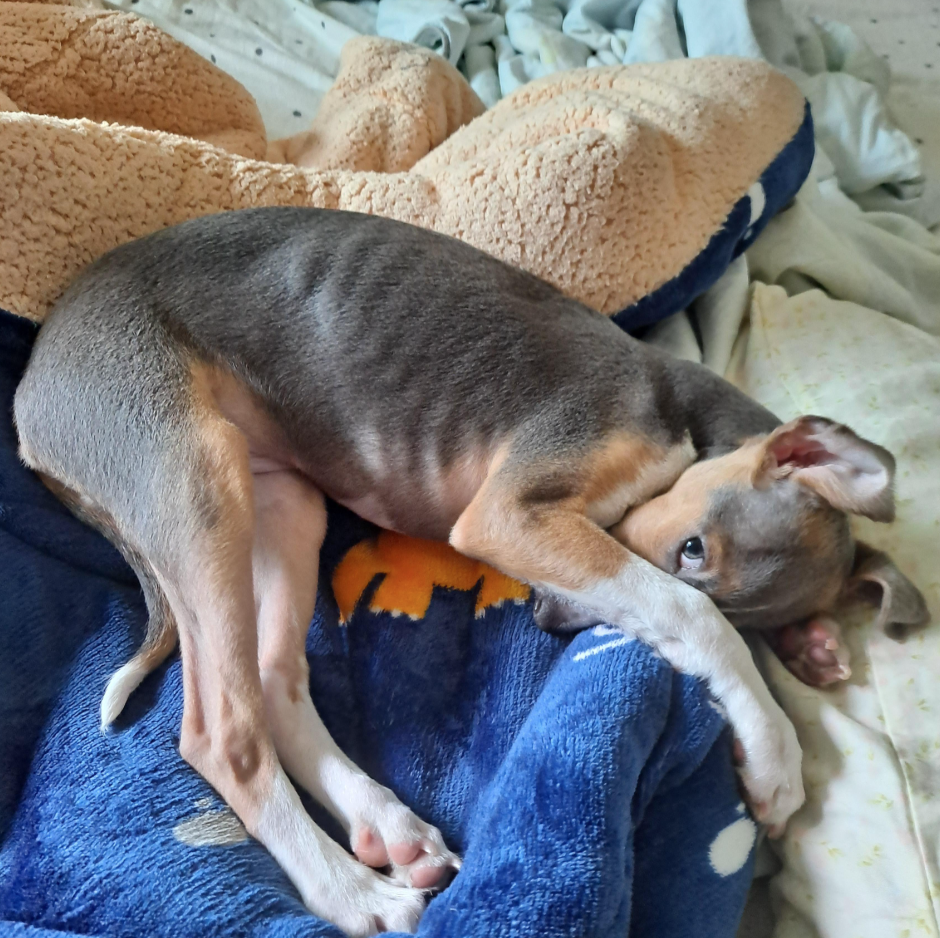
Image Source: Reddit
So, if you've noticed your furry friend shedding those extra pounds and becoming noticeably thinner, it's essential to consider the possibility of a flea infestation as a contributing factor. Don't let these pesky critters steal your pet's joy or their well-deserved curves!
Patches Of Fur Missing
If you've spotted random patches of fur missing on your lovable companion, it's time unleash your inner Ace Ventura. Fleas can be sneaky, and they make their way into your pet's life and leave behind itchy bite marks. Sometimes our furry buddies might try to alleviate the irritation.
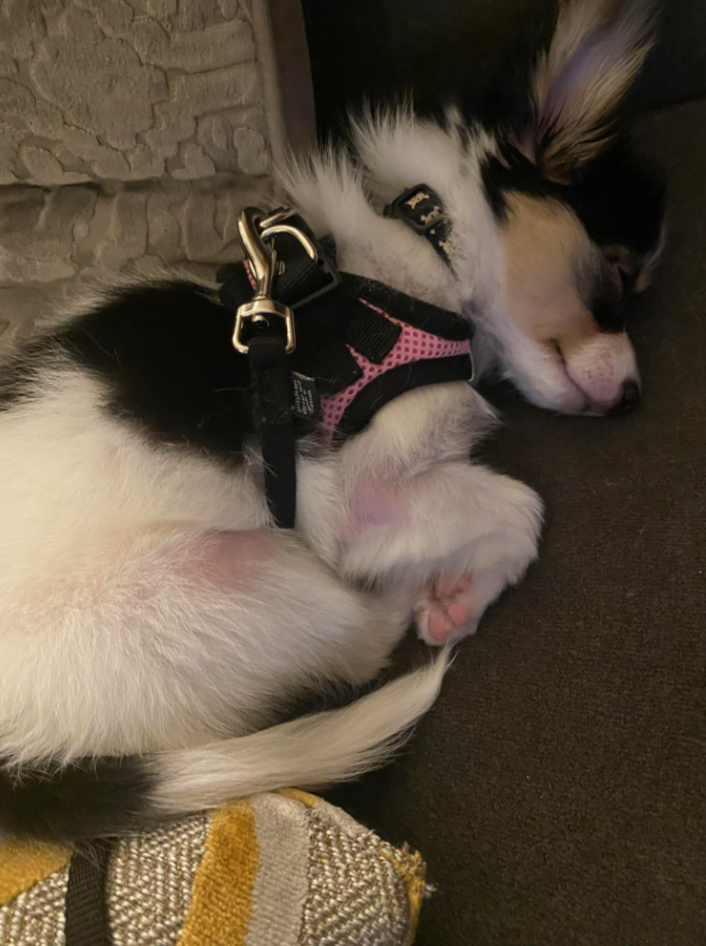
Image Source: Reddit
It's a poignant reflection of the lengths to which our furry buddies will go to find comfort. The missing fur is not just a cosmetic concern; it's a visible manifestation of the impact of these tiny pests on your pet's well-being. The loss of fur can take an emotional toll on your pet.
Frequent Head Shaking
If your pet has started head banging as if they're at a Foo Fighters concert, it's probably time to check them for fleas. Fleas will leave your pet irritated and uncomfortable, and the only defence they have is shaking their head over and over again.

Image Source: Reddit
As you watch your pet vigorously shake their head, you can hear the distinctive slap of their ears against their head. It's a sound that's impossible to ignore and serves as an auditory alarm that something needs to be addressed. It's indeed time to check for fleas.
Scabs And Hot Spots
If you've noticed your furry friend scratching and gnawing at specific spots, it's time to play the role of pet detective again. Fleas can be relentless, leaving behind bites, which lead to irritated skin, which lead to scabs and hot spots. These not-so-hot spots are a sure sign.
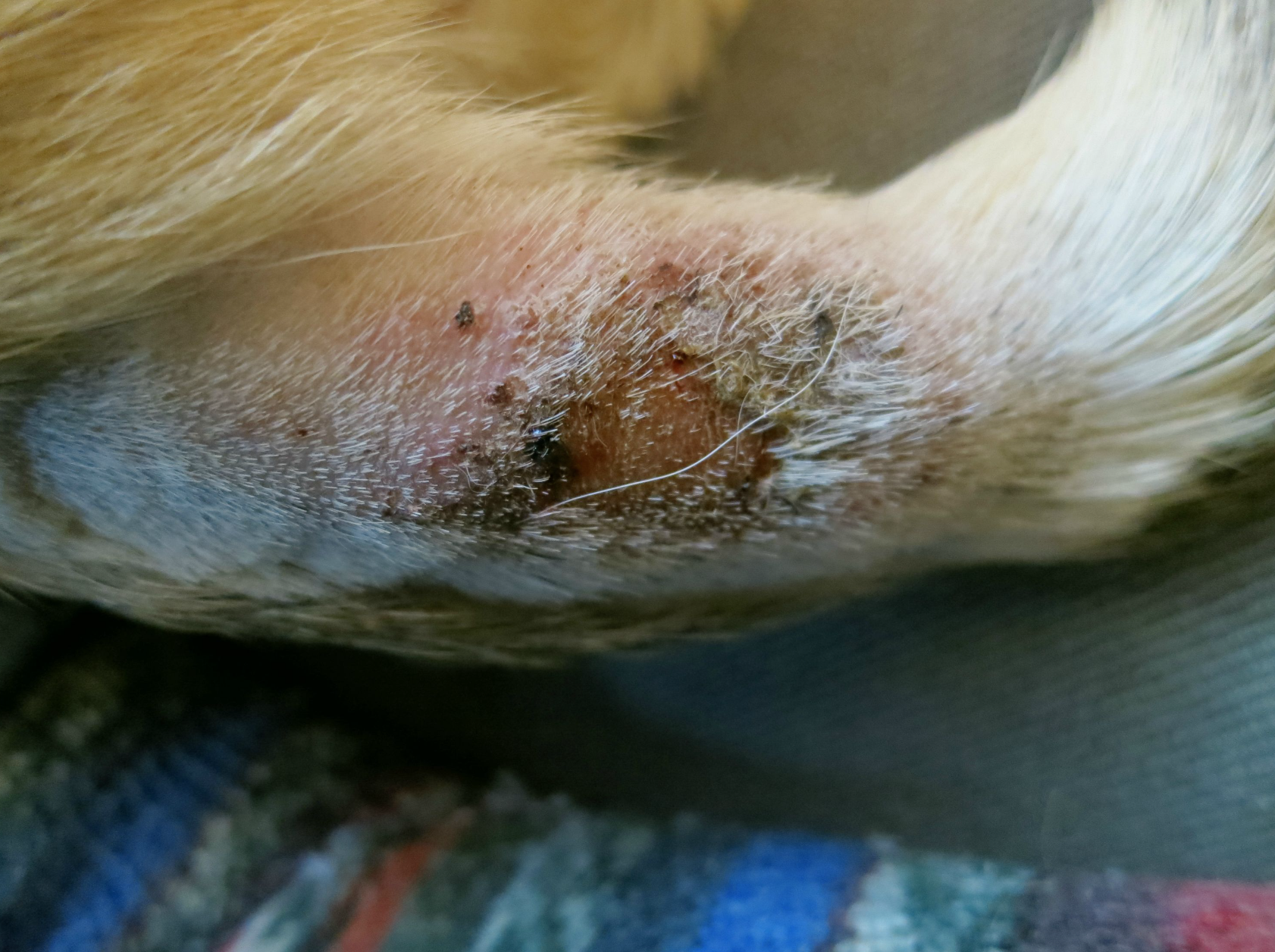
Image Source: Reddit
They are seeking to alleviate the relentless itch and pain caused by flea bites, and their behavior is a cry for help. As their devoted caretaker, it's your duty to step into the role of the detective, solve the mystery, and provide the relief they desperately need.
Unhealthy Looking Coat
We all know a luscious coat is a must for our four-legged friends, but sometimes those fleas can be real party crashers. If your pets once glossy and fabulous fur is looking a little dull, it could be a sign of fleas. Fleas can cause your pets fur to lose its natural shine.
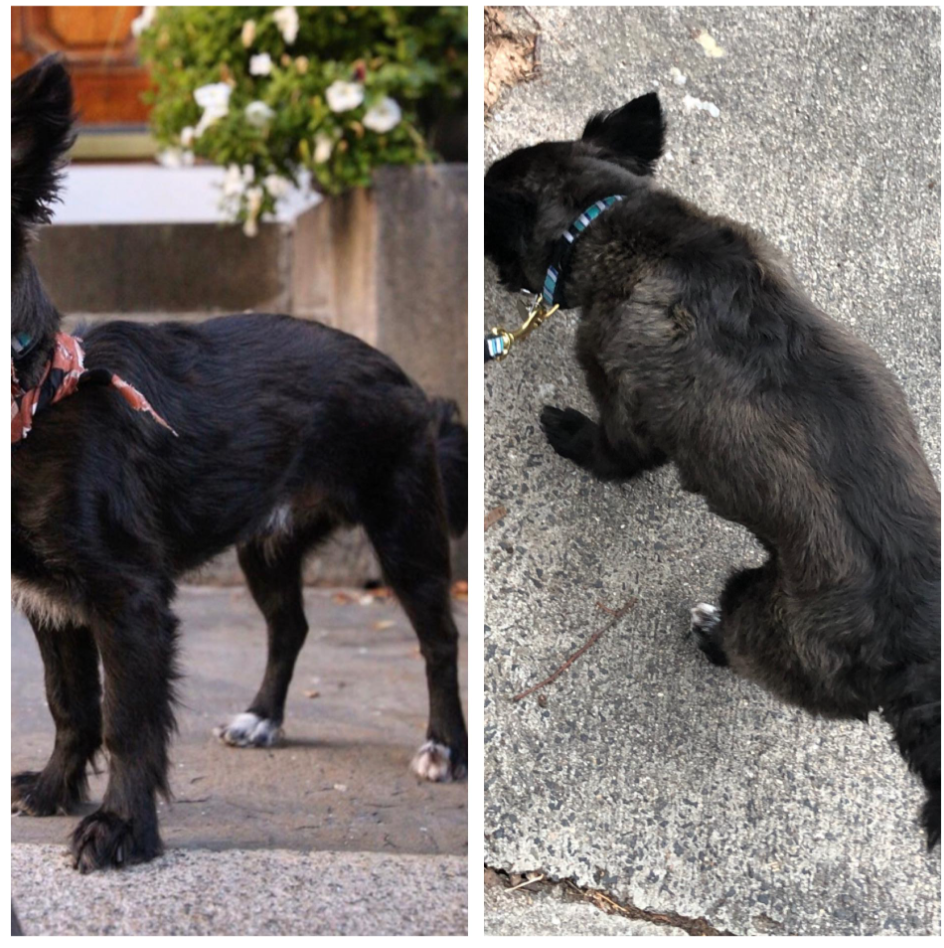
Image Source: Reddit
The result is a coat that appears lackluster, no longer radiating the brilliance and beauty that it once did. It's as if the fleas have cast a shadow over your pet's appearance and vitality. However, there's no need to fret, with the implementation of effective flea-destroying tactics.
Flea Larvae In Your House
We all enjoy having guests over to our house, but there's one group that isn't welcome - flea larvae! When you have a flea infestation, they leave their offspring all over your carpets and furniture to make sure that they survive, and it makes keeping on top of cleaning even harder.
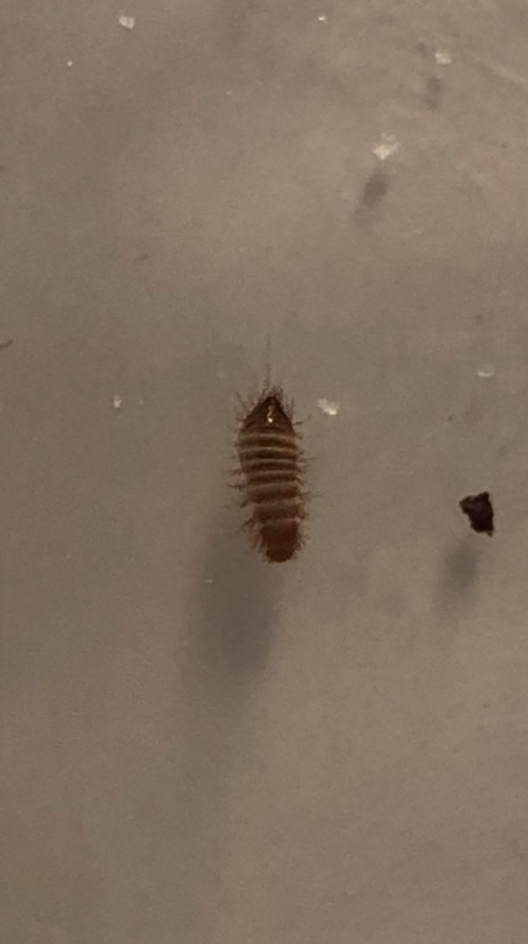
Image Source: Reddit
By treating your vacuum cleaner, you ensure that it not only collects the visible adult fleas and their larvae but also prevents them from making an escape and re-infesting your home. It's a critical step in ensuring that your house remains flea-free.
Dark Specks On Pet's Skin
Fleas leave behind tiny droppings that look like dark specks, and they tend to leave a trail of them all over your beloved pet's skin. These dark specks are more commonly known as 'flea dirt' - a slightly more tasteful name for flea droppings. Gross.
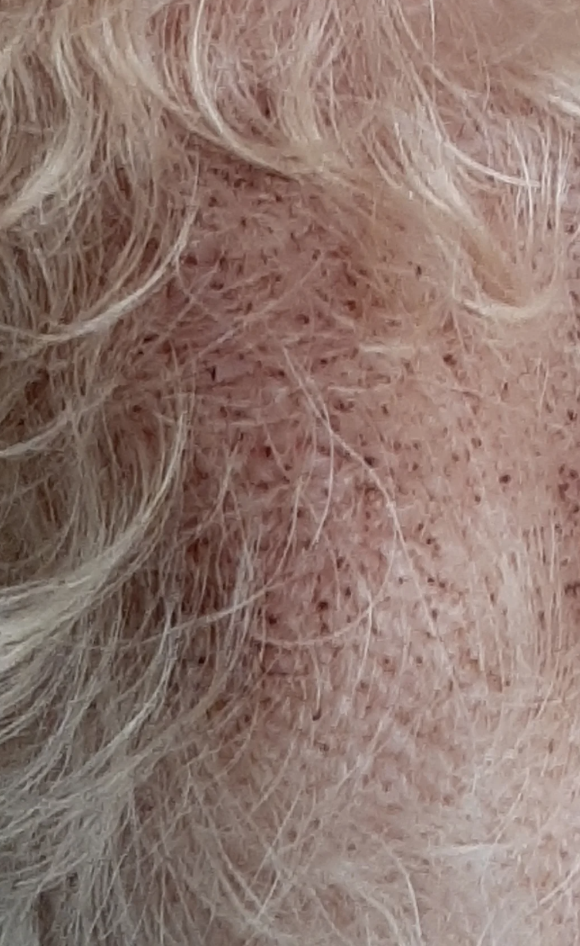
Image Source: Reddit
While fleas are often adept at hiding themselves, their droppings are an inadvertent clue that they've taken up residence on your furry friend. When you spot these dark specks on your pet's skin, it's a clear indicator that fleas are not only present but also actively feeding.
Doesn't Like Being Petted
We all love giving our furry friends love and affection throughout the day, but what happens when they start swerving your affectionate advances? Don't take it personally, the most likely reason is that fleas are terrorizing your poor pet. You probably wouldn't want to be petted either!
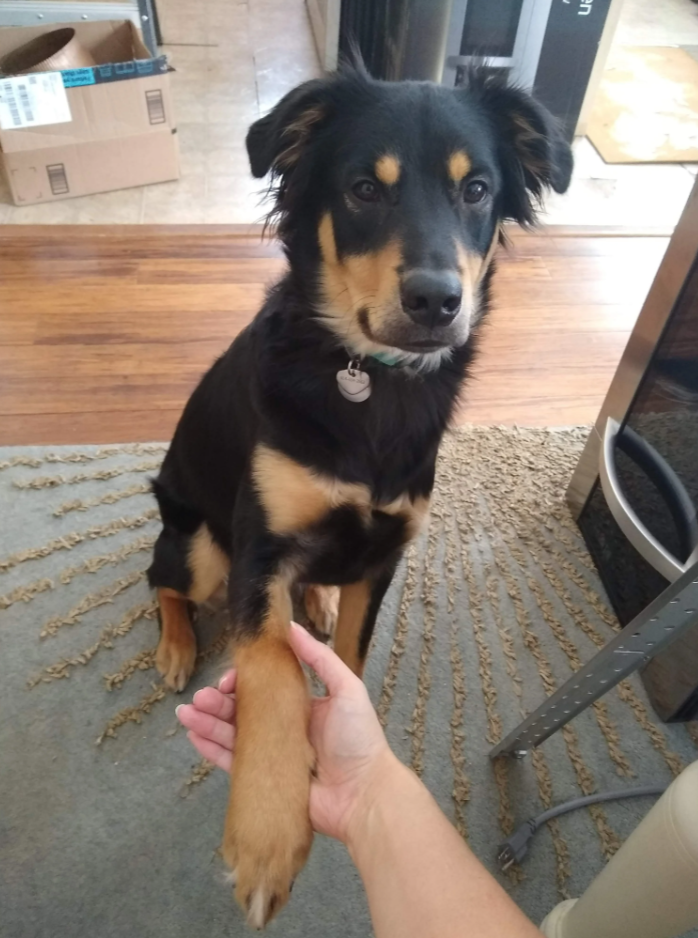
Image Source: Reddit
So, when your pet begins to swerve your loving advances, remember that it's not a rejection of your affection. It's a response to the discomfort and distress caused by the unwelcome presence of fleas. It's a clear signal that your pet is in need of assistance.
Runny Nose
If your pet pal has a runny nose, it might not just be a doggy-cold that is causing it. Fleas can trigger allergies in our pets, and a runny nose is a sure sign that your pet is flea-riddled. Keep an eye on your dogs sniffly nose, if it doesn't go away after a couple of days.
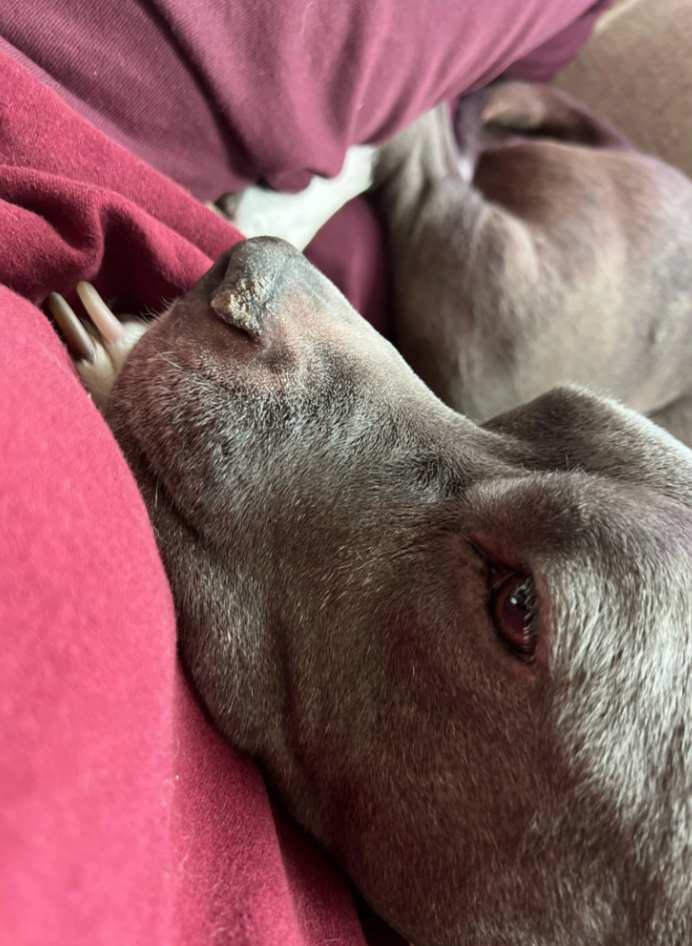
Image Source: Reddit
More than just a couple of days, it's a moment that warrants your attention. It's like a red flag, signaling that something might be amiss. It's a clear indication that your pet could be hosting a flea party, and that's one gathering that definitely needs to be shut down.
Inflamed Areas On Skin
If you notice that your pet has some inflamed areas of their skin, it could be a case of fleas. They cause irritating red spots of inflammation all over your pets skin and it can be almost unbearable for them. You need to find immediate relief for your furry friend.
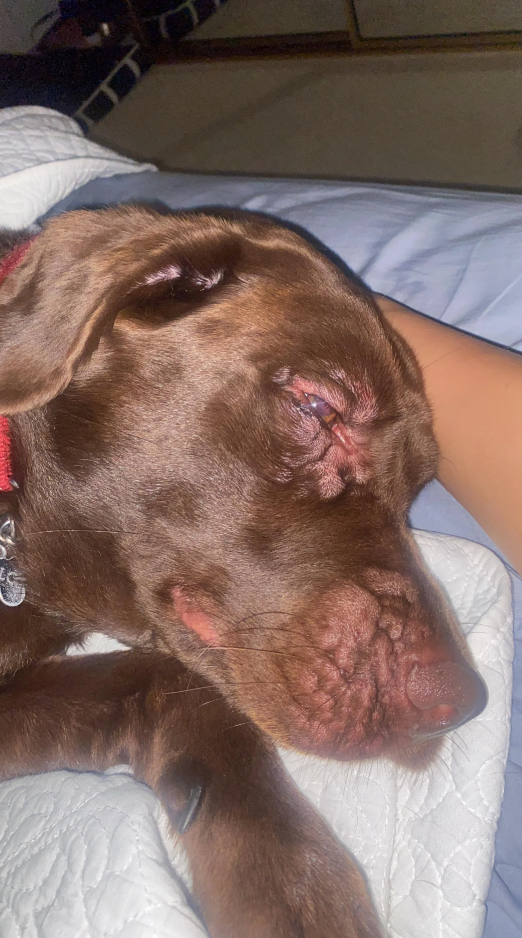
Image Source: Reddit
To truly address the issue, you must also tackle the root cause of the problem: the fleas themselves. Treating your pet for fleas, as well as taking measures to prevent future infestations, is essential. This may involve using flea control products and thoroughly cleaning your pet's environment.
Visible Signs Of Flea Bites
If you spot tiny, red welts on your furry friends skin, it's probably a pretty clear sign that fleas has invaded your pet's fur. Flea bites are the most irritating thing your pet can experience, causing itchiness and discomfort, and it is worth keeping an eye on.
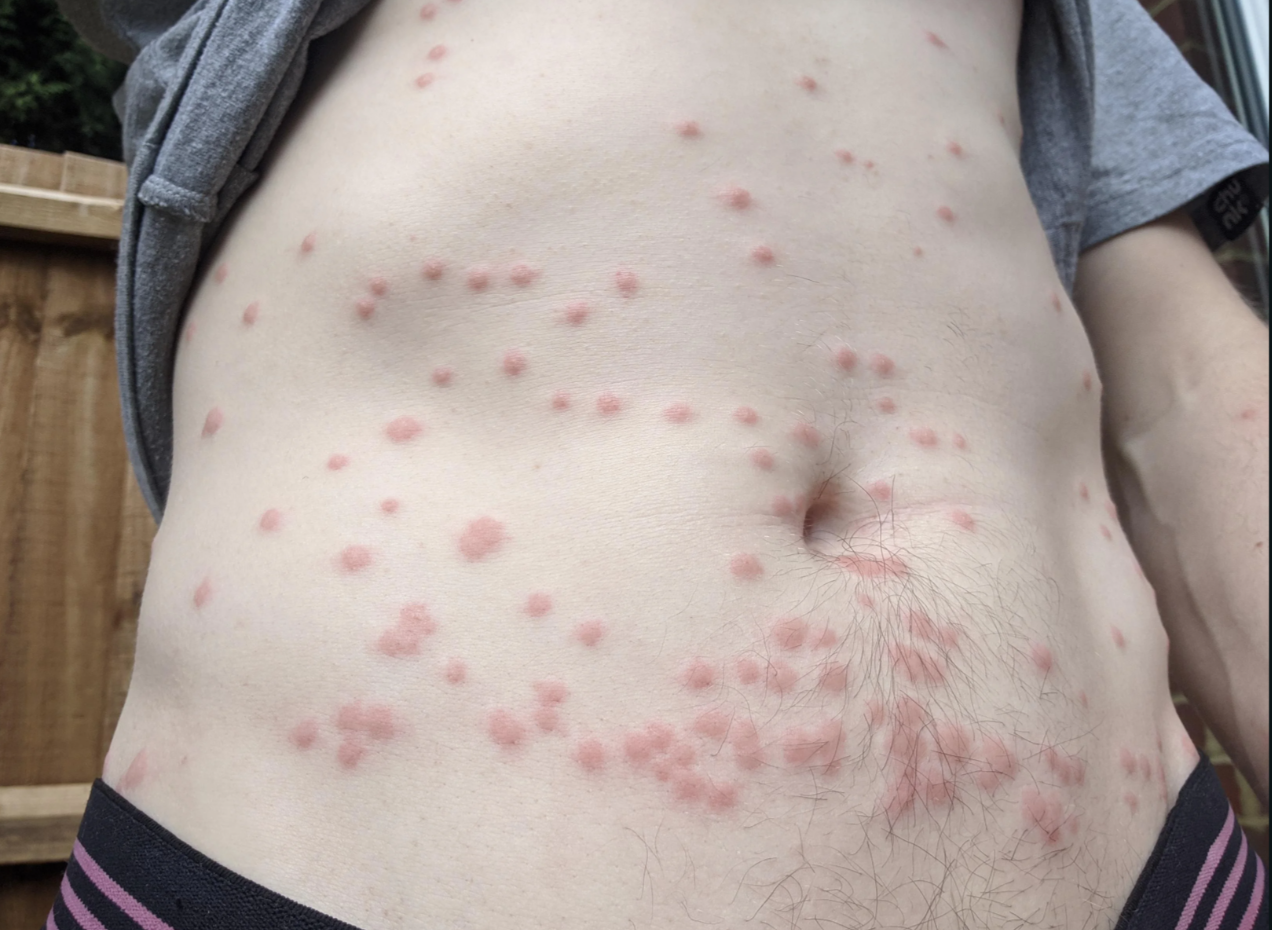
Image Source: Reddit
Additionally, tackling fleas should not be limited to treating your pet alone. Fleas can be found not only on your pet but also in your home environment. Flea eggs, larvae, and pupae can hide in carpets, bedding, and furniture. Comprehensive flea control measures are needed.
Signs your dog has a tick and what to do
Along with fleas, ticks are another thing you have to deal with and prevent when it comes to your pets. You can usually get pet treatment which prevents fleas and ticks in one (like over the counter treatment or from your vet) but when it comes to what they are...

image source: reddit.com
... How do you recognize them? And what signs should you watch out for? Fleas and ticks can be a different experience! It can also be much harder to spot a lone tick. Along with fleas, ticks are another formidable concern that every responsible pet owner must deal with and take steps to prevent.
What does a tick look like?
Fleas look different to ticks, but if they're very small and you can't get a close enough look yourself, it might be hard for you to distinguish! The main things to look out for with tick appearance is change in size, because ticks become larger when they feed.
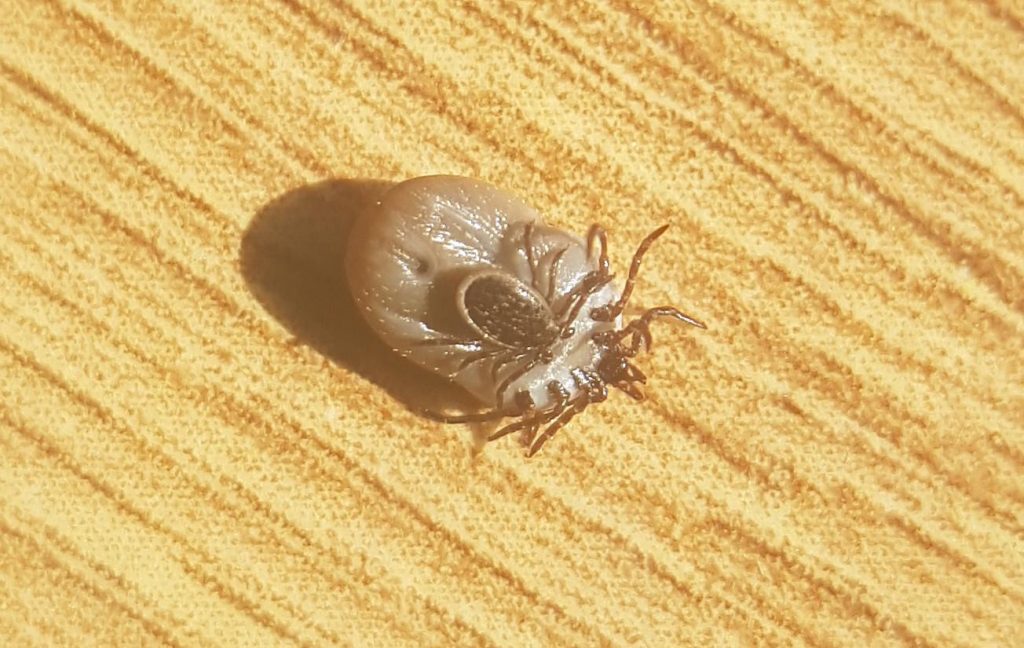
image source: reddit.com
Ticks typically start off quite small, often resembling a tiny seed or speck. Ticks usually exhibit colors that range from gray to brown, but their exact color can vary based on factors such as the species of tick and its life stage. They have a round or oval body shape, and they lack wings and antennae.
The different types of ticks you need to know
As well as changing in appearance, ticks can come in all different types, and especially in different parts of the world. It's really important to know what type of tick you might be dealing with, because each will mean different symptoms as well as different levels of threat to your pet.

image source: reddit.com
If you can't identify yourself, this is why it's so important to consult your vet to find out what you're dealing with! Knowing the different types will help to identify common ticks, or if you're dealing with something a whole lot different and need to talk to your vet.
Common ticks
The ticks most likely found on pets will vary from country to country, but there's usually a 'common' type of tick that will latch onto pets, and these are the ones that are usually grey or brown in color. For the most part, these ticks might feed and then drop off.
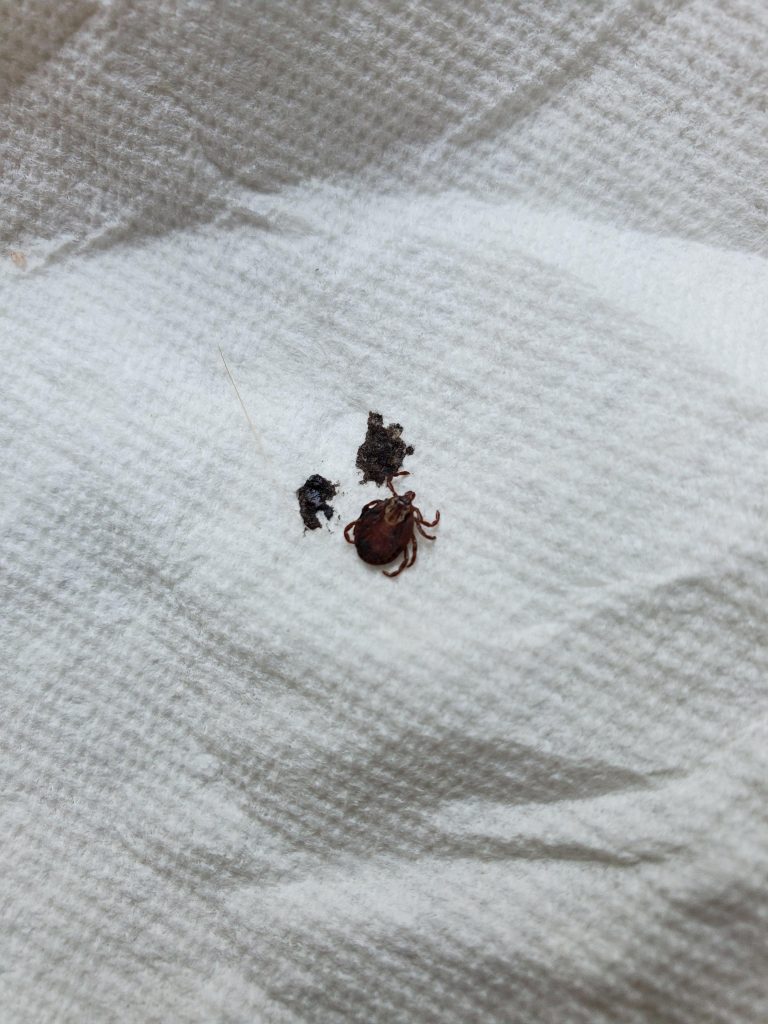
image source: reddit.com
These common ticks often found on pets are typically referred to as "hard ticks." Hard ticks have a distinctive structure that includes a tough, shield-like plate on their back, which helps protect their feeding apparatus. They use specialized mouthparts to anchor themselves.
Paralysis ticks
In some parts of the world, you may also have to deal with paralysis ticks. These ticks are considered one of the most dangerous to watch out for because - as the name suggests - these can cause paralysis in your dog or cat. They do this by releasing a toxin.
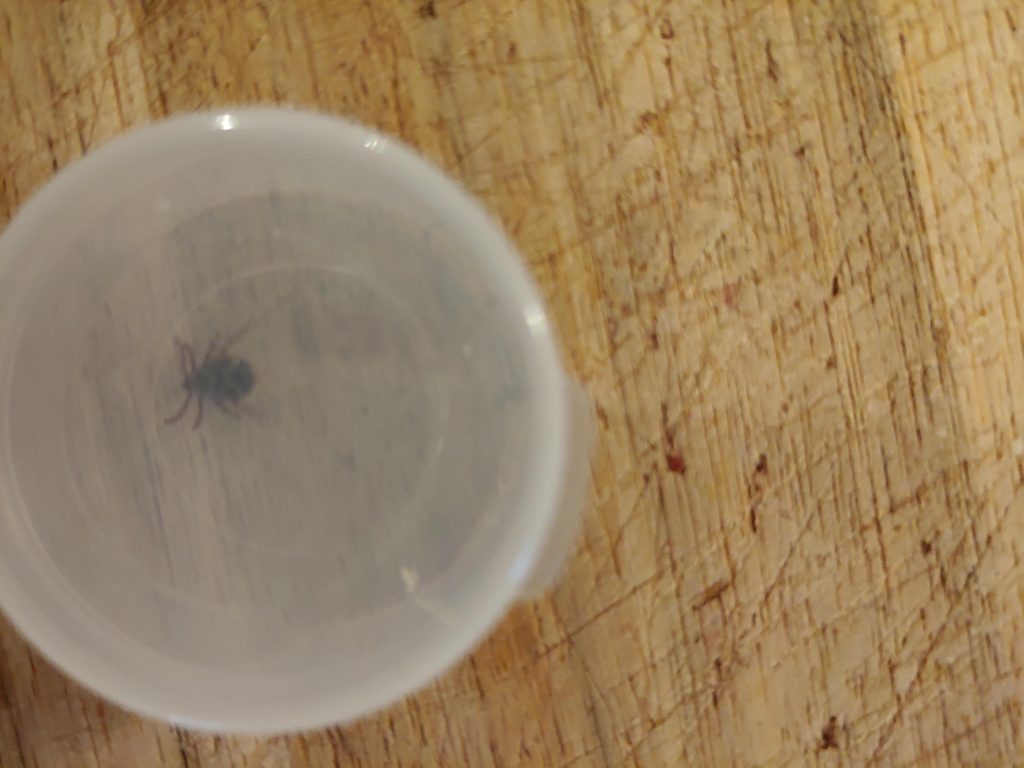
image source: reddit.com
If you discover a paralysis tick on your pet, immediate and careful removal is critical. It's best to consult your veterinarian for guidance on tick removal, as their specialized tools and expertise ensure safe extraction. They may also administer anti-tick serum.
Brown dog ticks
In some parts of the world like Australia, these brown ticks can be found quite often, and although they don't cause as big a threat as paralysis, they can cause a lot of irritation and may also transmit infections from one pet to another if they unlatch themselves and move on!
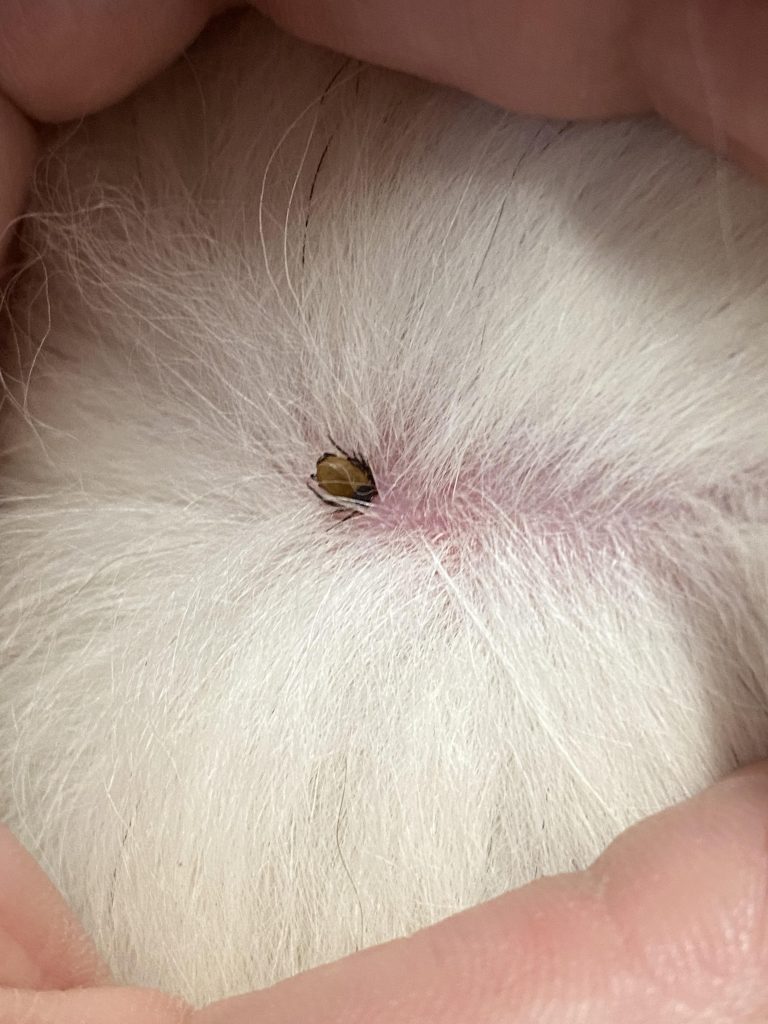
image source: reddit.com
It may also be potentially fatal if these infections are passed on, or a lot of brown dog ticks at once may result in excess blood loss. Brown dog ticks are characterized by their brown coloration and oval shape. Brown dog ticks typically do not cause paralysis in pets.
How do ticks manage to get onto your dog?
The most common way that ticks find their way to your pet is during walks outdoors. All that time your dog is roaming around in long grass or walking around, they're exposed to the potential of ticks. Ticks are sensitive to heat, which means they'll be able to detect when a heat source is sniffing nearby...
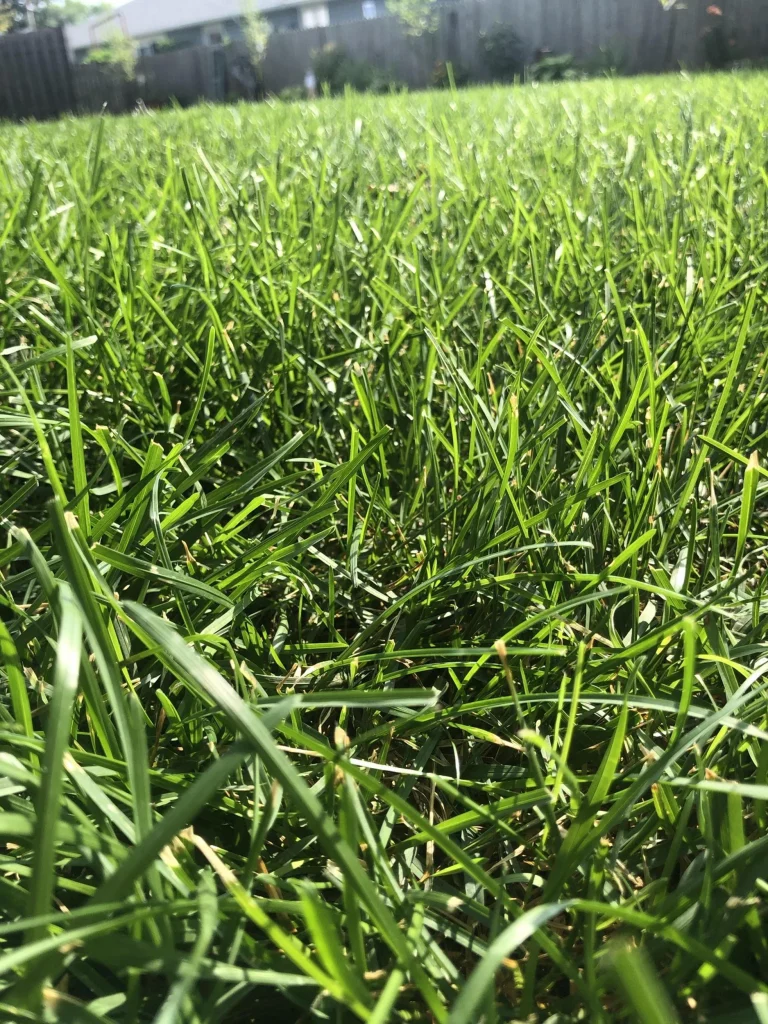
image source: reddit.com
... like your pooch! The tick will grab onto your dog's body and then find the perfect spot to settle, and it will usually be a place you can't easily see, and will usually be hidden by the end of the long walk you're on without realizing what's happened!
It helps to check them after every walk
For this reason, it's a good idea to give your dog a pat down and a check after every single walk. You can do this by running your hands along their body as well as looking very closely at key areas, like behind their legs and close to their stomach, as well as their neck.
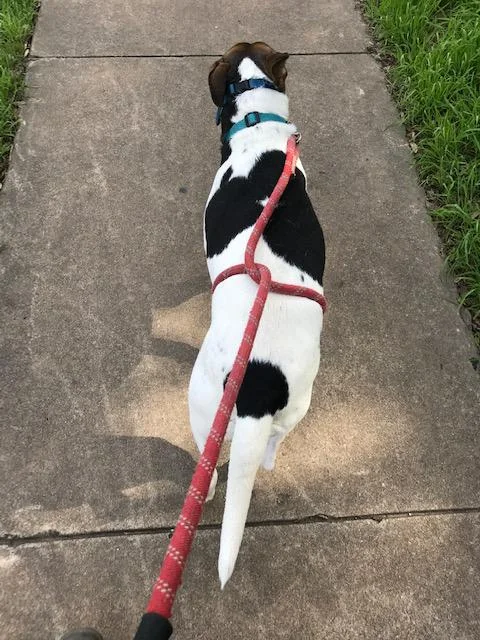
image source: reddit.com
By combining a hands-on examination, visual inspection, and proper tick removal techniques, you can ensure your pet's safety and well-being in tick-prone areas. This practice is a crucial aspect of responsible pet ownership and can help prevent tick-related issues before they escalate.
You might see a red area
One of the most common ways of identifying a tick is you might notice a red and sore-looking area on your dog's body. It's worth giving them a look over if they roll onto their back because you're more likely to see any irritated looking patches of skin.
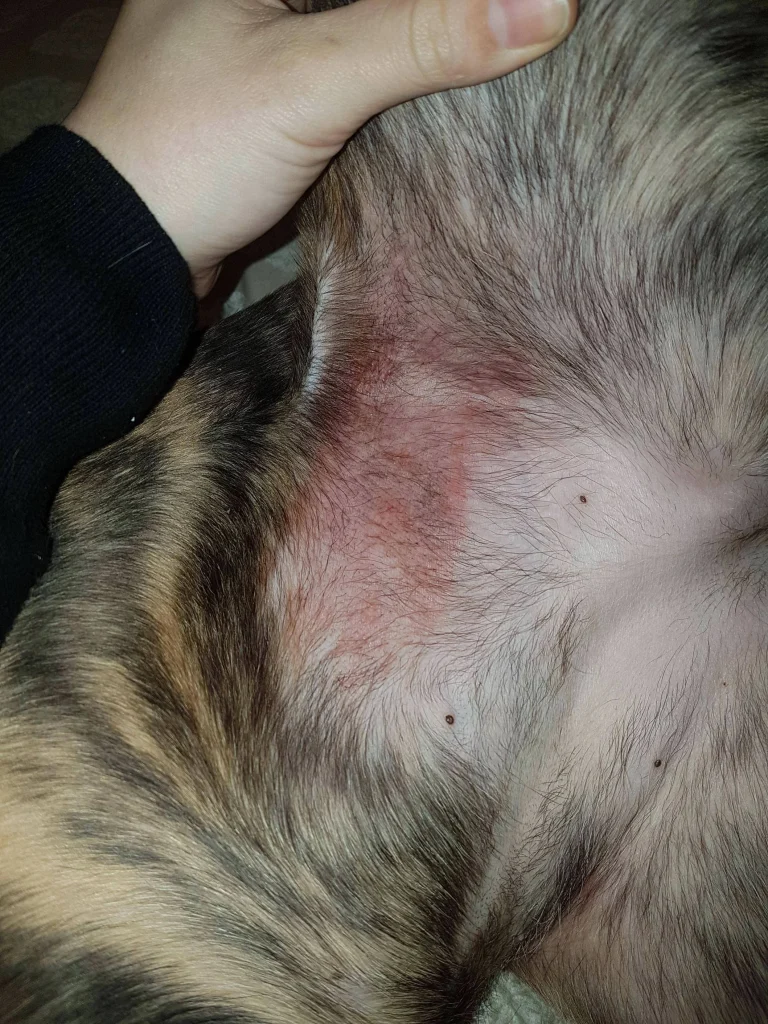
image source: reddit.com
The underbody is attractive to ticks because it offers a concealed and warm environment, making it an ideal location for ticks to attach. Therefore, you are more likely to spot any irritated patches of skin or tick-related symptoms when your dog rolls onto their back.
Your dog may be lethargic
There are many reasons your dog might be acting more tired than usual when it comes to health problems, but this can be a sign of a tick bite. It might be that they're suddenly acting more tired and slow than usual, especially during times of peak exercise like their daily walk.
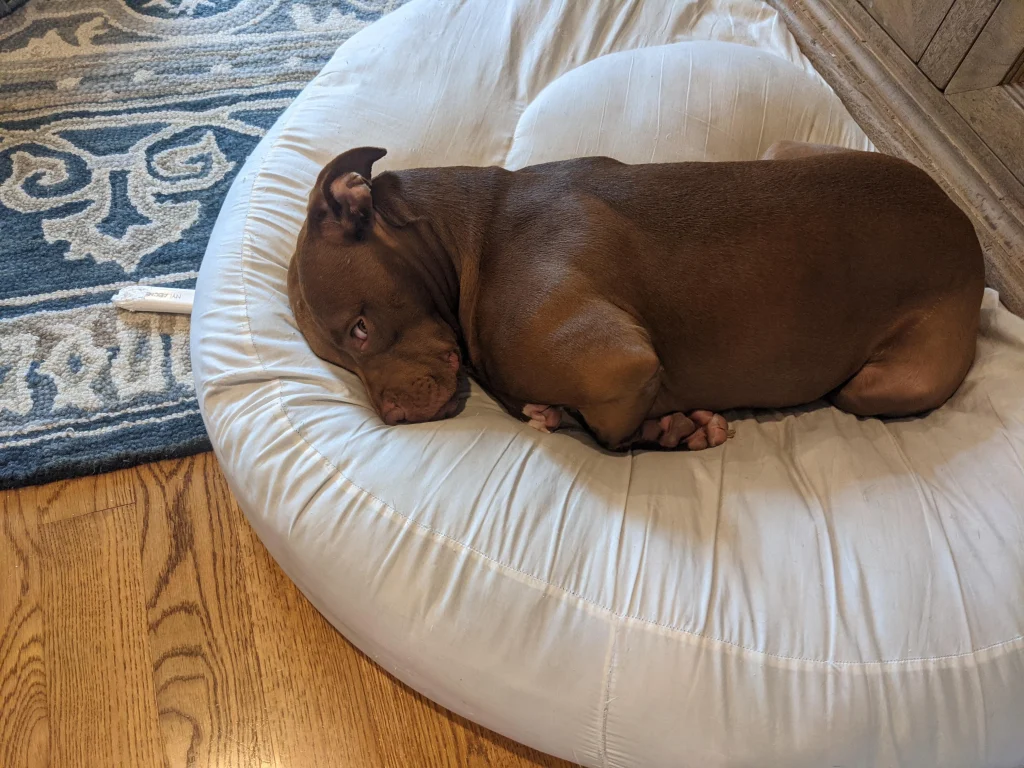
image source: reddit.com
In addition to fatigue, other signs of tick infestation can include redness and swelling at the bite site, itchiness, and even potential symptoms like fever, joint pain, or lameness. Checking your dog's skin for ticks after outdoor activities is a good practice.
They might vomit
In reaction to how a tick bite has made them feel, or how it's making them feel while attached to them, your dog might having some vomiting. This could be coupled with a change in appetite, most particularly a loss of appetite which can also come with feeling sick.

image source: reddit.com
They might not fully vomit, either, as they might instead make retching or coughing noises as a sign something doesn't feel comfortable! The discomfort and irritation caused by a tick bite can trigger a dog's gag reflex. This can result in retching or coughing as a response.
They're unsteady on their feet
This one can link to the certain ticks that can cause paralysis through their bite, as your dog may be in the first stage of losing feeling in their limbs. You might notice they're a little bit wobbly on their back legs, or maybe not even able to stand up. This could be an early stage leading to paralysis.
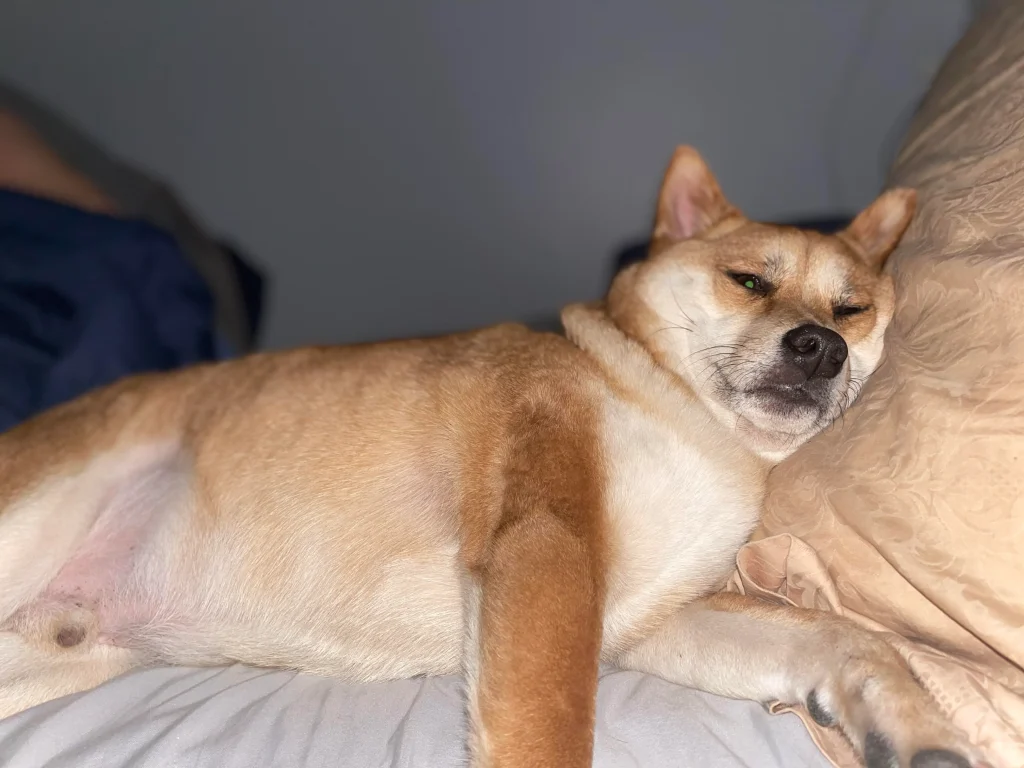
image source: reddit.com
Noticing early signs of tick-induced paralysis, such as limb weakness and wobbliness, is a critical step in ensuring your dog's well-being. Prompt action and immediate veterinary care are essential in managing tick paralysis and preventing its progression.
Change in their vocal noises
Every dog owner will know when something sounds different or off in their pet's vocal noises, and it might be that your dog is showing their discomfort at the irritation of the tick bite or it being embedded in their skin by whimpering, or making heavy breathing noises.

image source: reddit.com
They may also start sharp barking around the house, when there's nothing to bark at, and you may notice a change in tone from their usual bark. As a pet owner, you'll know what a normal (non-pain) bark sounds like for them, so vocal pattern changes mean something.
It's unlikely you'll catch a tick from your dog
The one thing to remember is that you don't need to avoid or be worried about being around your dog if they have a tick on them, as it's very unlikely a tick is going to get attached to you from the same walk outside, or just from you being close to your dog. Tick bites are possible, though.
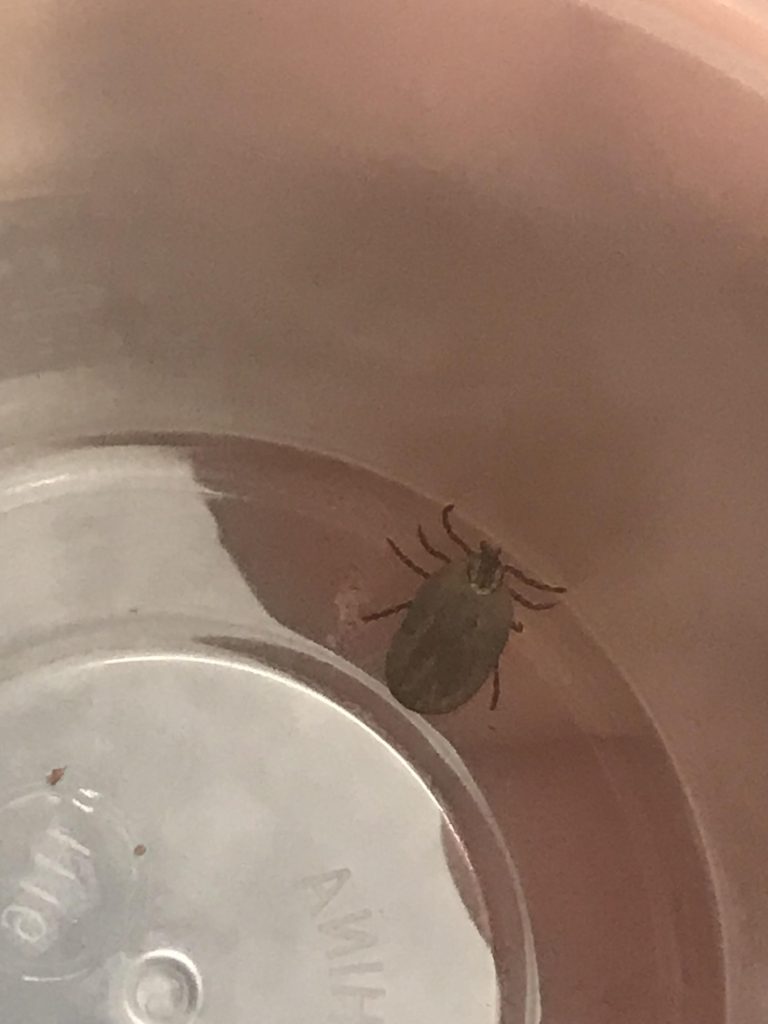
image source: reddit.com
The risk of a tick transferring from your dog to you is minimal, and there's no need to avoid or be overly worried about being in close proximity to your pet when they have a tick. By taking appropriate precautions, you can effectively minimize any potential risk.
The best way to check for ticks
The best way to try and find a tick on your dog is using your bare fingertips, and it's going to take a little time and patience on both your and your dog's part! You should start at the very top of their head and place your fingers directly against their skin.
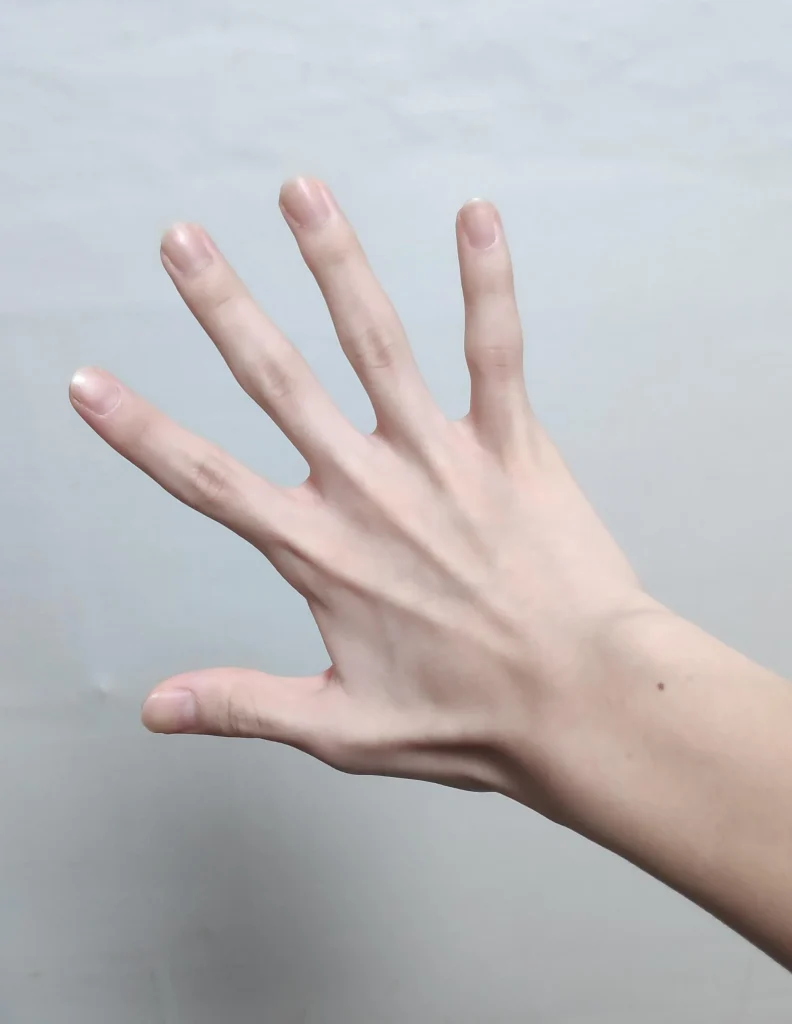
image source: reddit.com
Then move your fingers all over the body, including behind the ears and down to the toes. You should be able to feel a bump if there's a tick. Using your bare fingertips on your dog is an effective way to detect ticks. A systematic and gentle approach can help ensure that you locate any ticks.
The importance of doing this all the time
It's actually a good idea to do this 'feel down' of your dog every day, regardless of whether you suspect ticks or not, because it's going to make it very easy to get to know your dog's skin. Your dog might have some harmless skin tags that feel like bumps...

image source: reddit.com
... so if you feel them down regularly, you'll know straight away what's a normal bump or skin tag for them is (something harmless that they've always had), and will more easily feel anything out of the ordinary. You can also mention skin tags to your vet just to be sure.
How to remove a tick
If you do find a tick, it's important to remove it as quickly as possible. In a lot of cases, pet owners can do this themselves at home without needing to make a vet appointment. In some cases ticks do drop off by themselves, but it's never worth the risk of waiting for that.
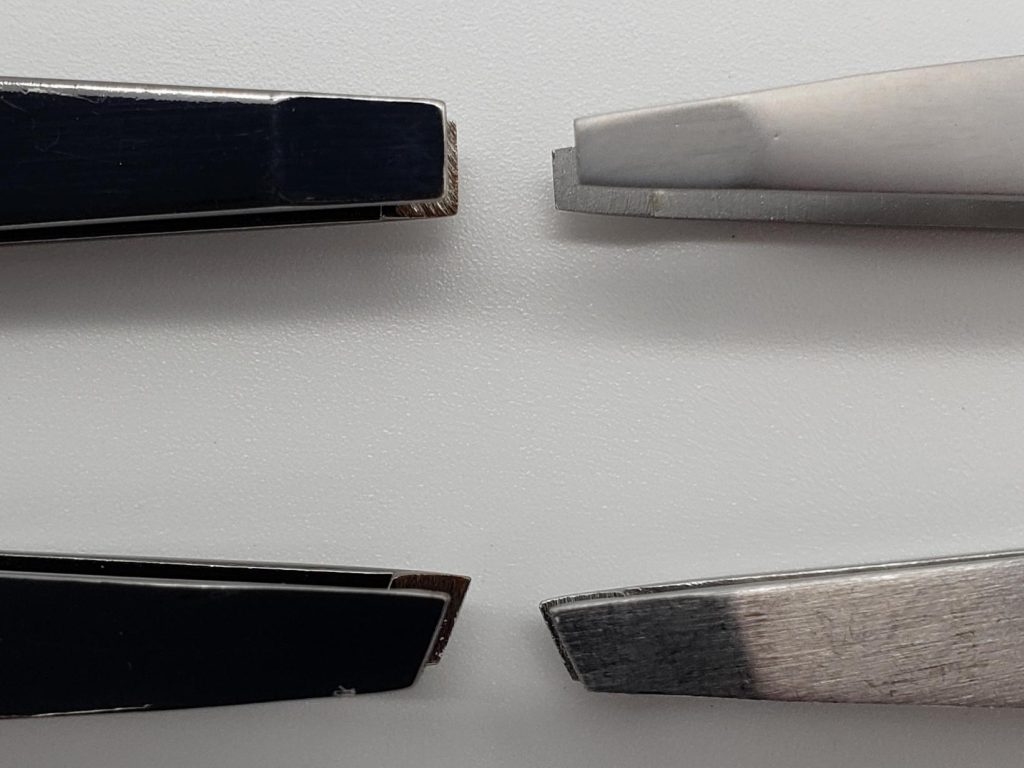
image source: reddit.com
You can buy special tick-removing tweezers, or if you have a normal set of tweezers, these will work just as well (provided you don't pluck your eyebrows afterwards, of course!) It's always a good idea to have some form of tweezers on hand at all times as a pet owner.
The right way to pull!
When plucking away the tick and pulling it from your dog's skin, it's important not to grab the tick in the same way you would a hair sticking out of the body, where you pinch the end sticking out and pull. Instead, turn your tweezers lengthways against your dog's skin.

image source: cdc.com
Lengthways against your dog's skin rather than sticking upwards is what you should be aiming for. Grab the tick flatways along its head, closest to the skin, twist it and pull that way. You can then keep the tick in a sealed container to show your vet.
Dealing with an engorged tick
Sometimes you might be dealing with a larger tick that's engorged because it's been feeding on blood, and this can make it harder and more tricky to pluck - because you definitely don't want to be squeezing it, or grabbing the engorged body! Use the same method as above.

image source: amherstvethospital.com
When using this method, make sure to use the tweezers lengthways across the head. Twist and pull in the same way. It can be harder or more off-putting to do when they're engorged, but don't worry, as long as you grab in the right place it won't 'pop' them!
How best to prevent ticks
One of the best ways to prevent ticks - as well as fleas - is to use a regular guard treatment, and be sure never to miss a dose! You can use over the counter ones you trust and which are effective on your pet, or you can make a vet appointment for tick and flea treatment.

image source: reddit.com
Tick and flea treatment usually needs to be done every few months. You can also get flea and tick collars as well as liquid versions you apply to the skin. It's important to never skip one, so make sure to set reminders on your device or write it down to ensure you're kept up to date.

















































